Everyone was right about Cusco. It’s a gorgeous, lively city. And it’s touristy as fuck.
Machu Picchu to South America is like Angkor Watt to Southeast Asia. Annoying touts, rip offs, lying tour companies, endless jam-packed tourist vans, and flag waving leaders. If internationals from all over the world are coming to South America, it’s for Peru for about two weeks, just enough time to sample Lima, Cusco and Machu Picchu, and maybe the Amazon.
But despite all the noise, it IS a beautiful city with an overwhelmingly amount of places to see, food to taste, crap to buy, and trails to hike. We tried yummy Peruvian cuisine which included alpaca burgers, quinoa ice cream, rocoto relleno, and even roast cuy!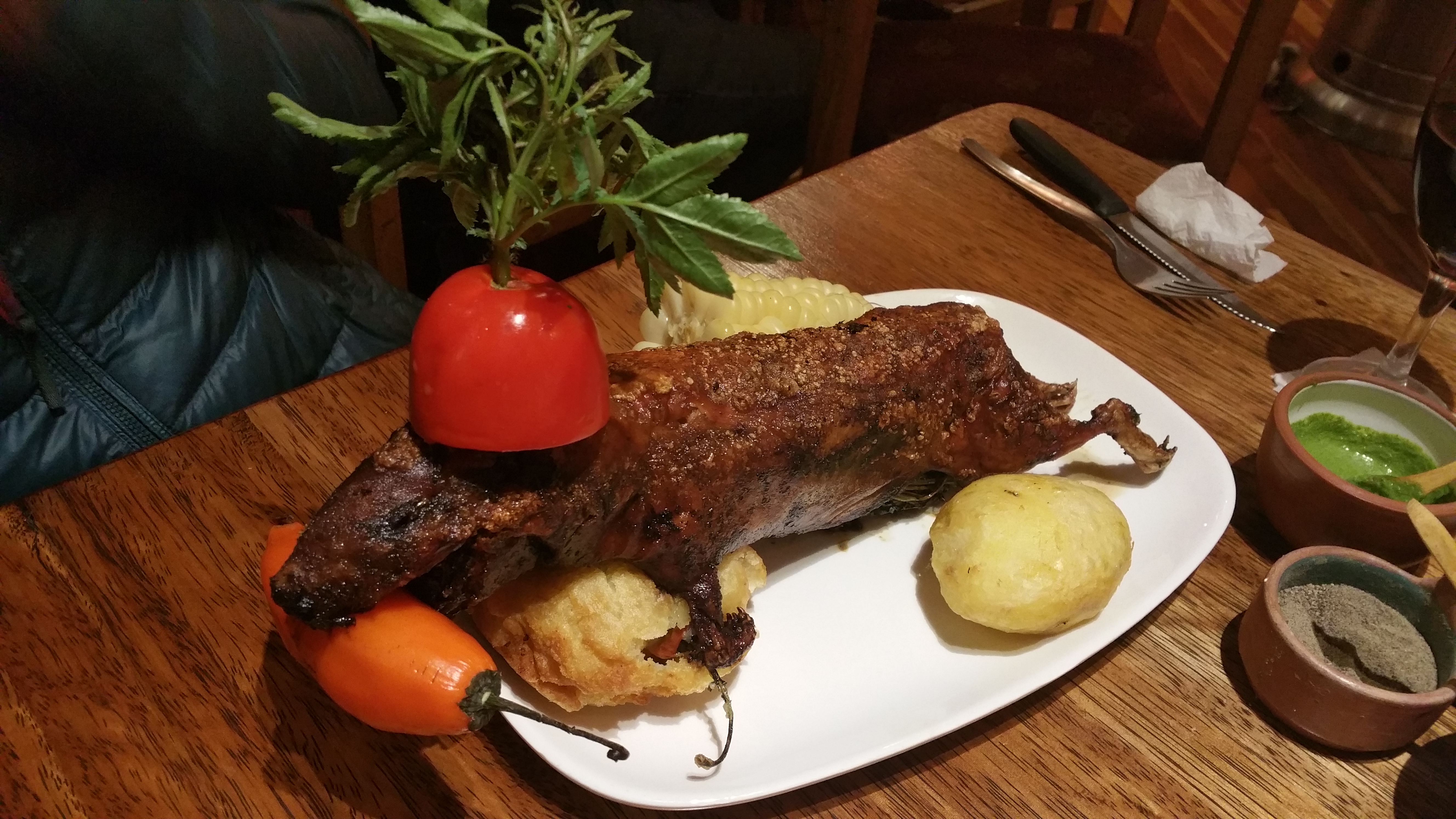
We ate cuy (guinea pig) at a midrange restaurant catered for tourists, but there was plenty of street cuy as well.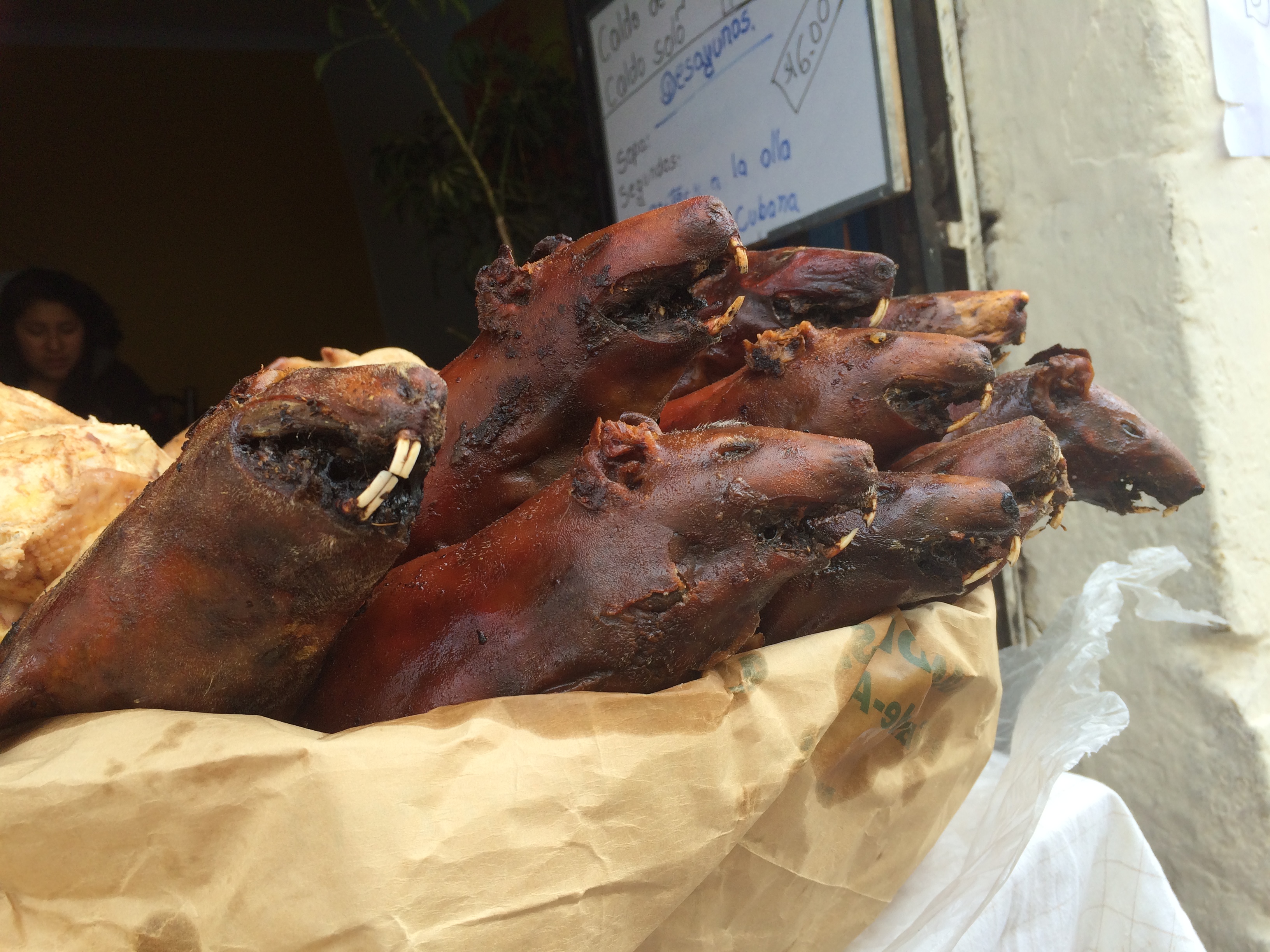
I had lomo saltado twice, but my favorite was from a street vendor, a plate for only 3 soles (~$1). Saltado con huevo!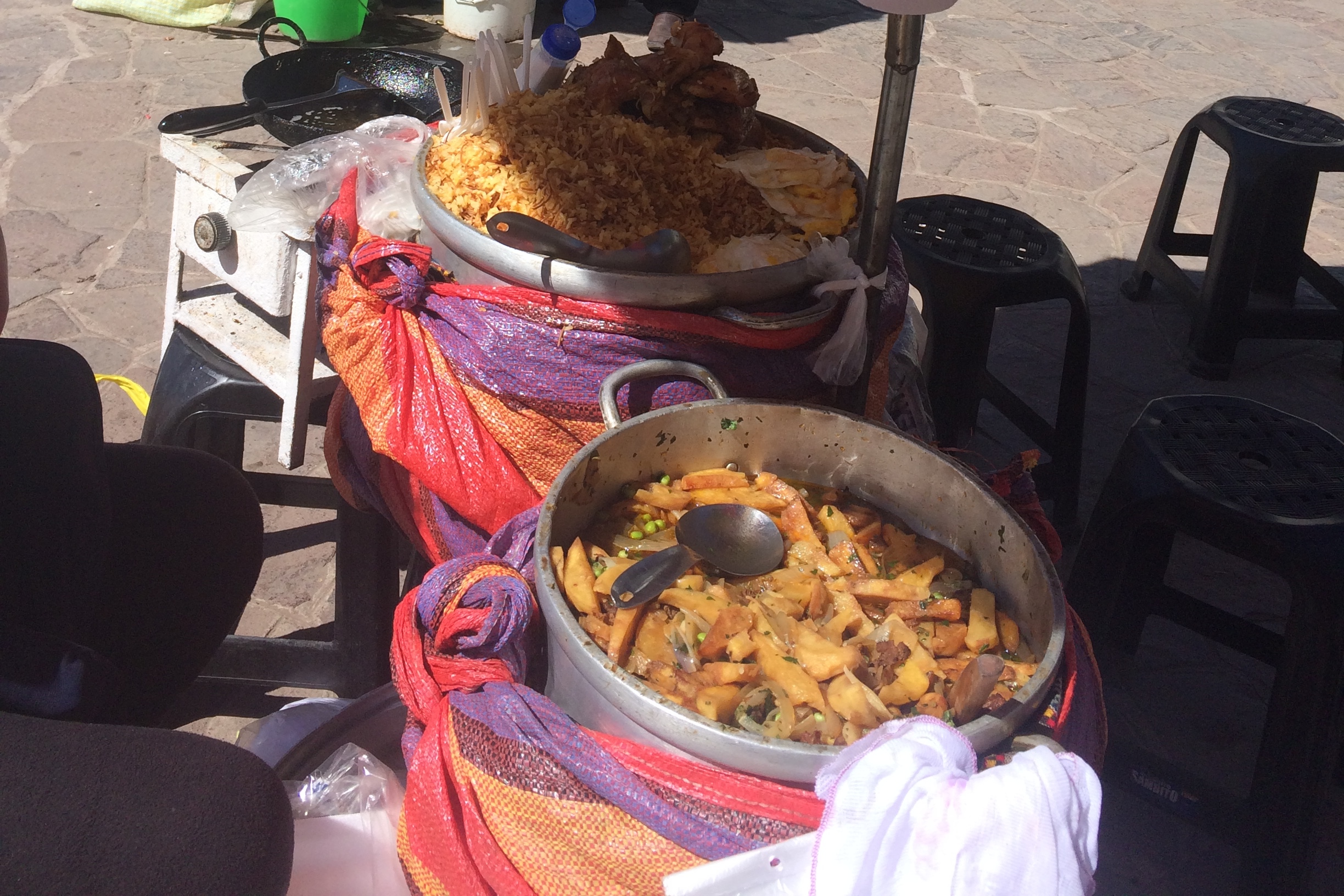
Our favorite were the papas rellenas, which we devoured almost every evening from a lady who fried them in front of the neighborhood mini market. Comfort food at its finest.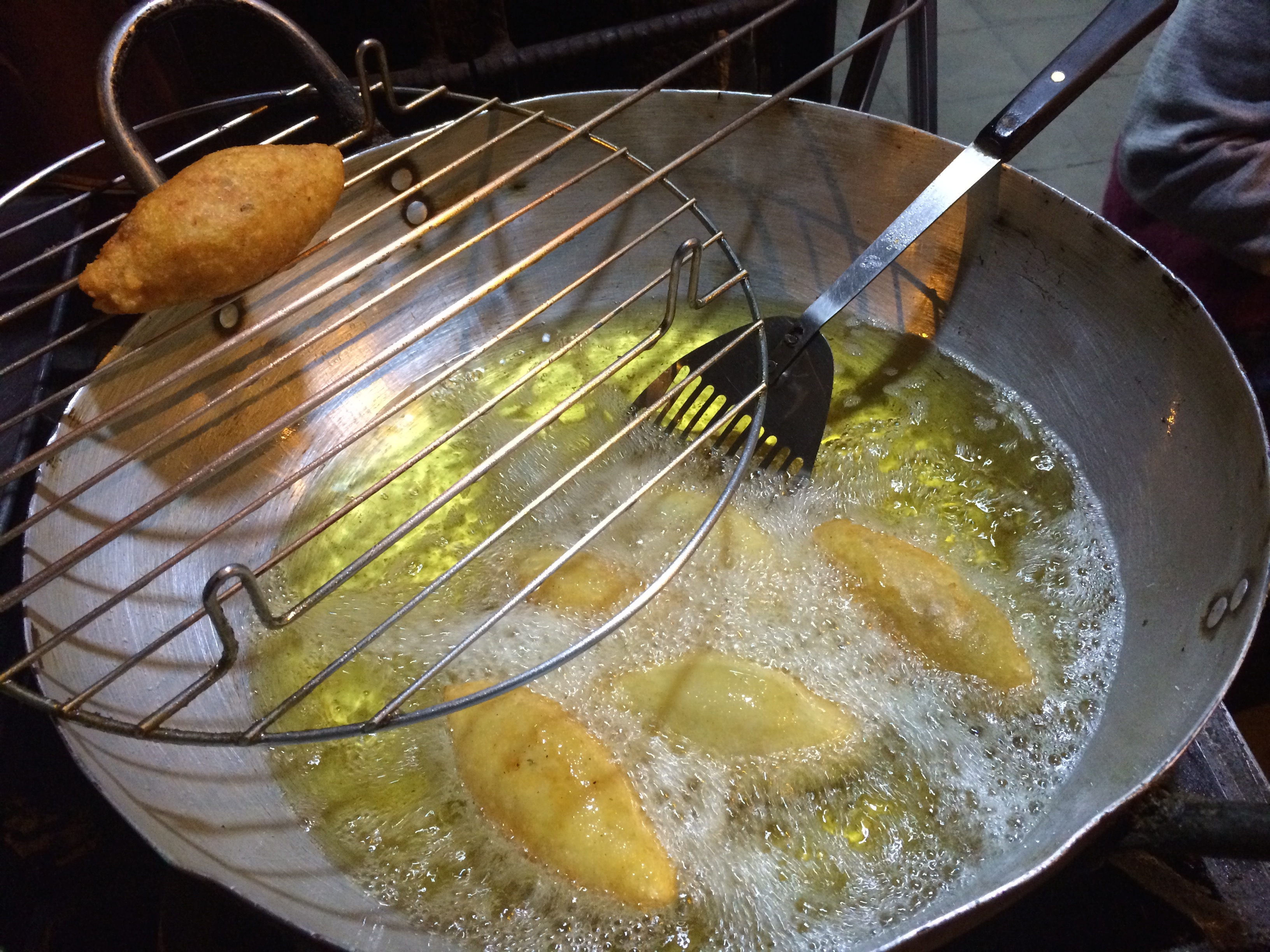
Traces of Incan architecture can be found everywhere; from the narrow alleyways and residential streets, heavy stones set the foundation for many buildings.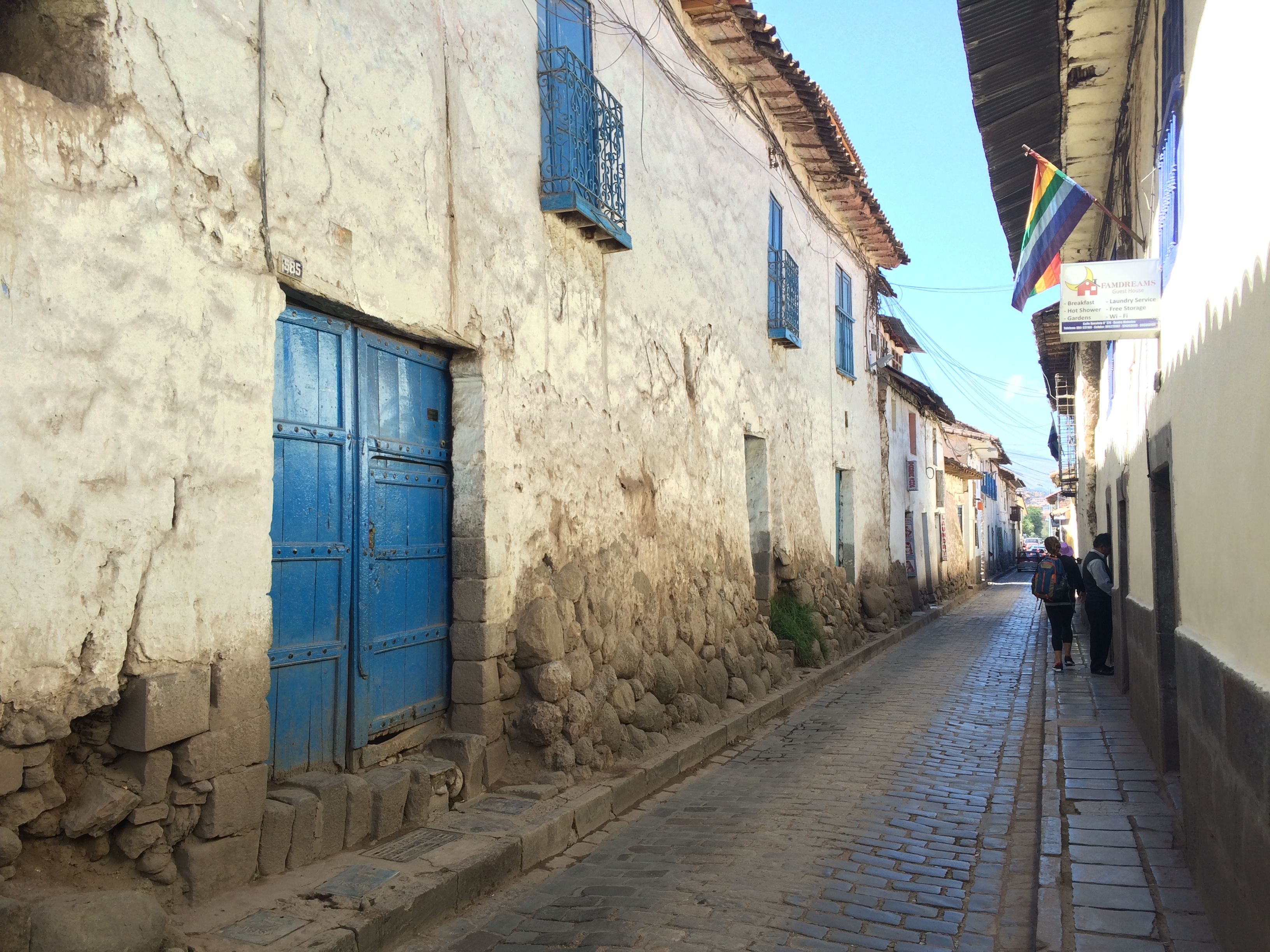
The Plaza de Armas is lined with beautiful, historic buildings. 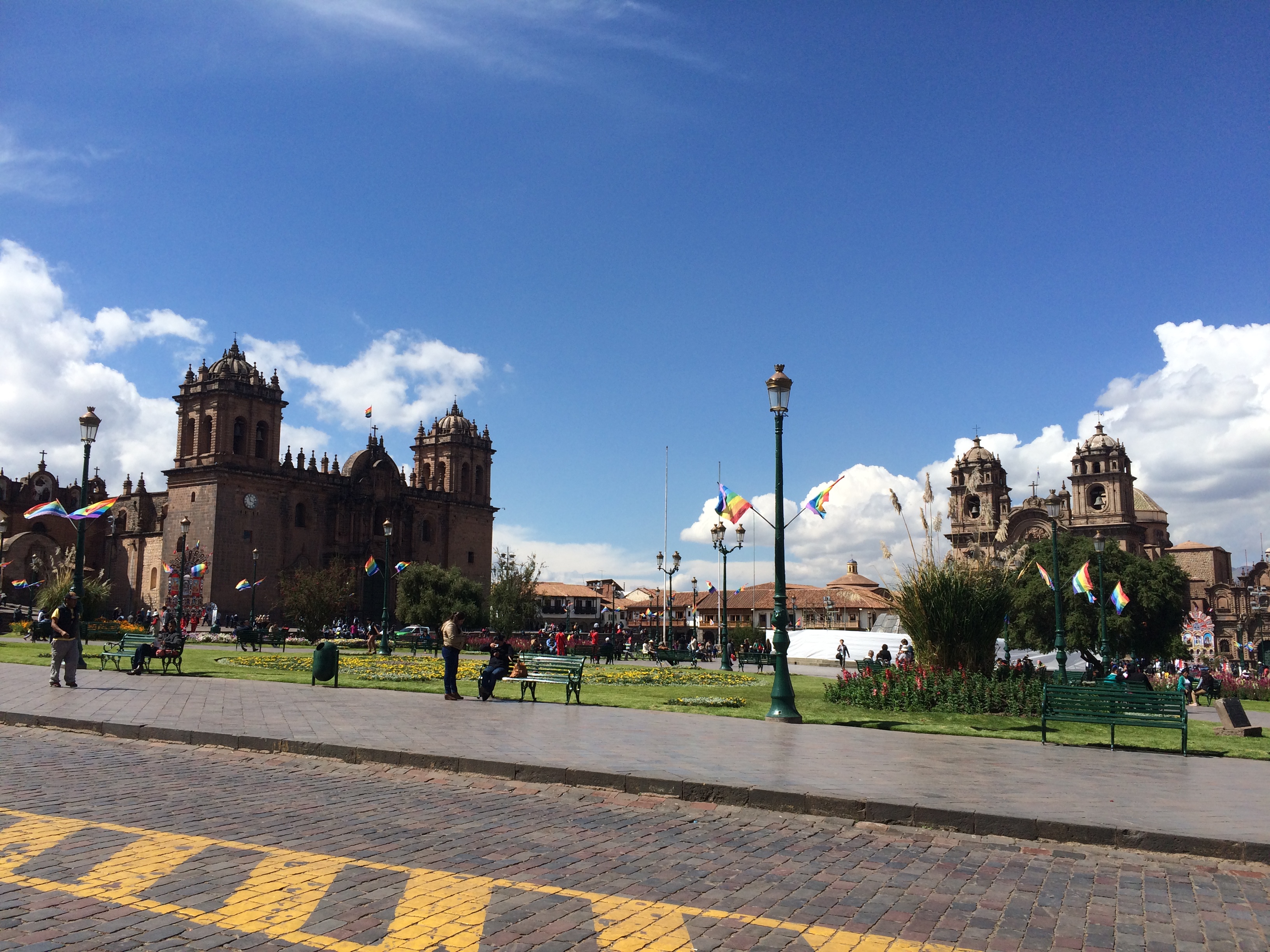
We arrived at the close of Corpus Christi, a major Peruvian holiday, and we witnessed the preparation for the upcoming Winter Solstice or Sun Festival (June 24th), one of the most important Incan ceremonies in Cusco. Every day and night the streets were filled with locals of all ages dressed in gaudy traditional attire; all were either marching, dancing, playing musical instruments, or making some sort of raucous noise. 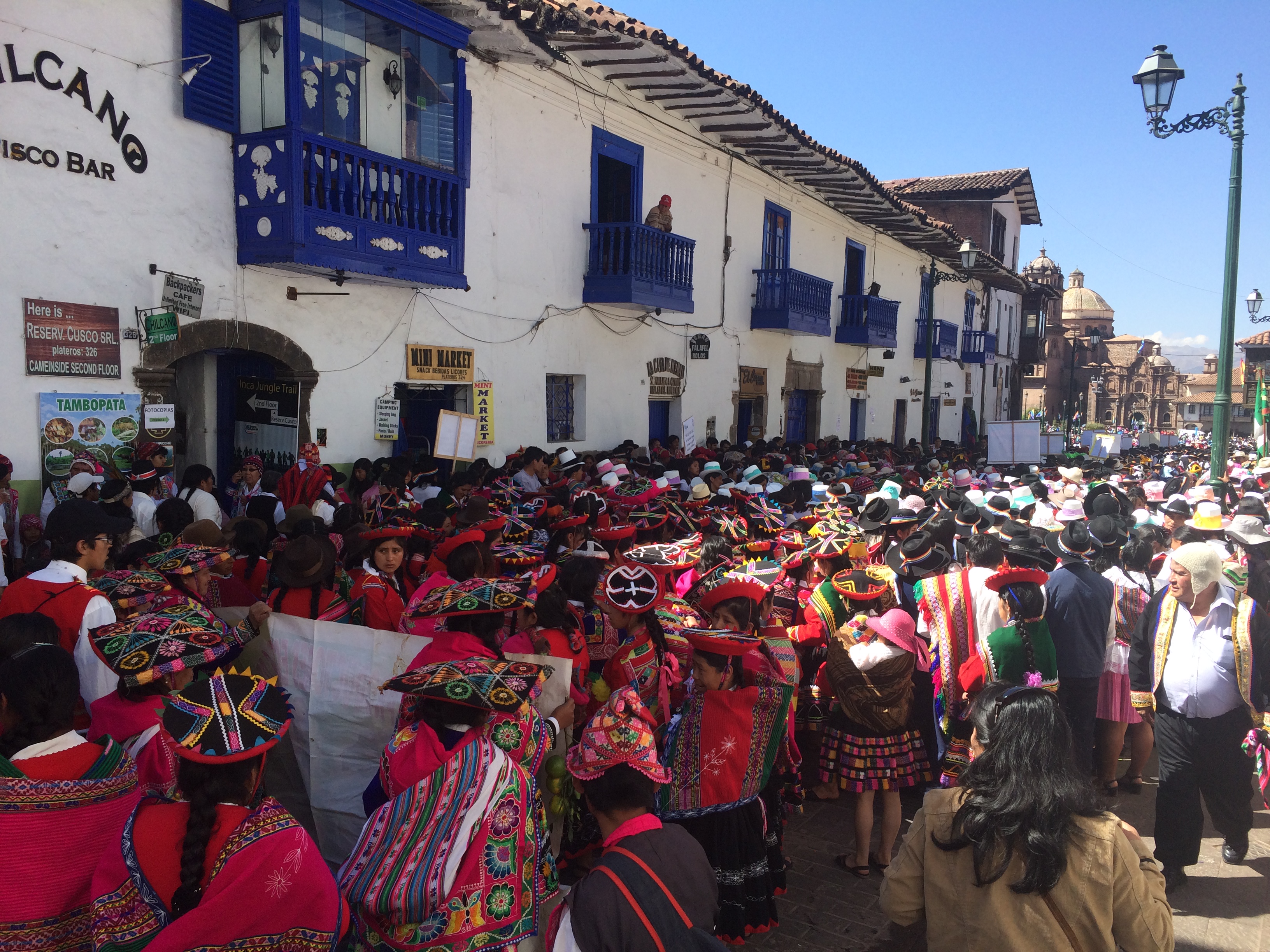
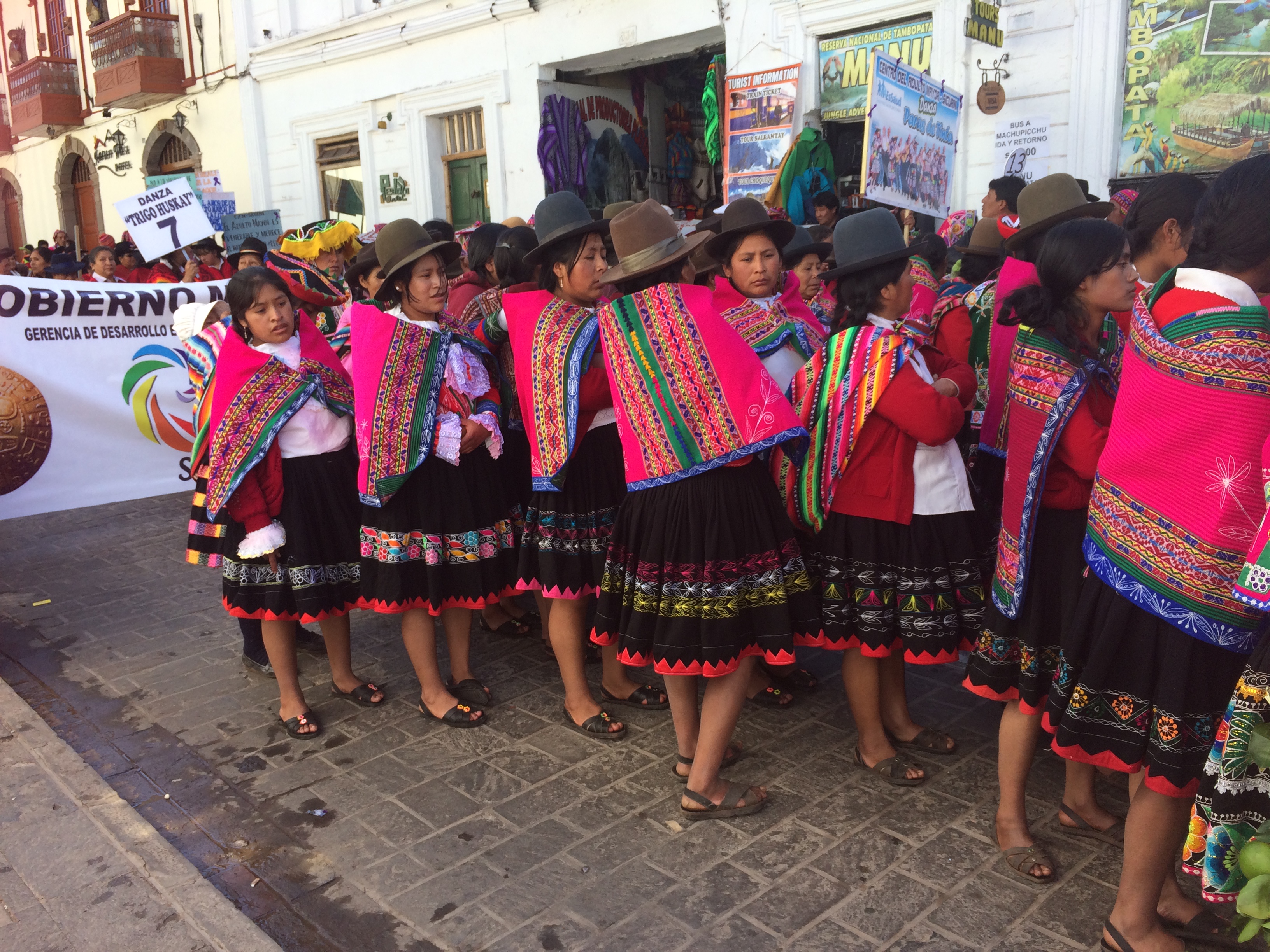
Teenage girls having a quick snack: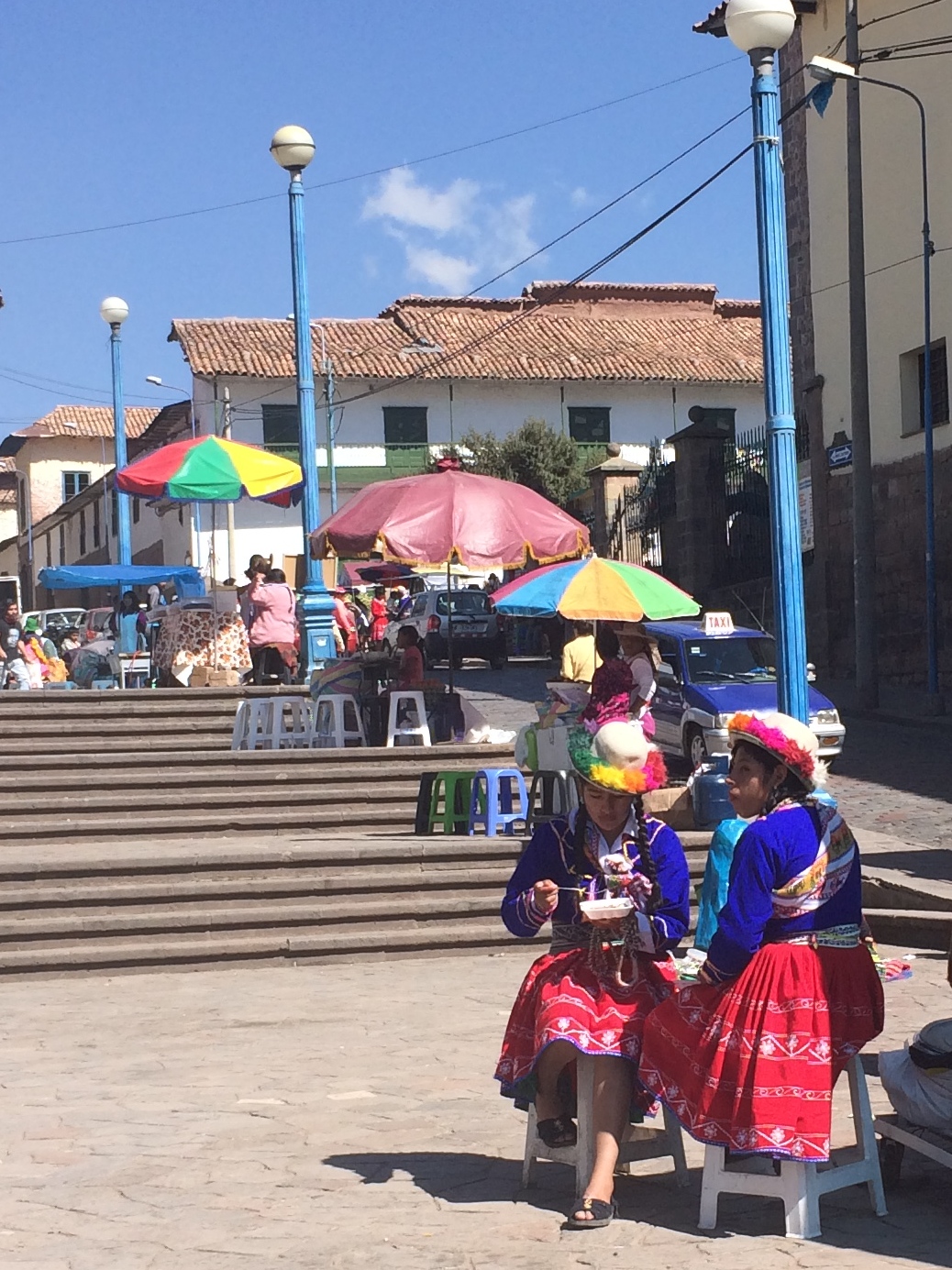
Even hundreds of children partook in the festivities.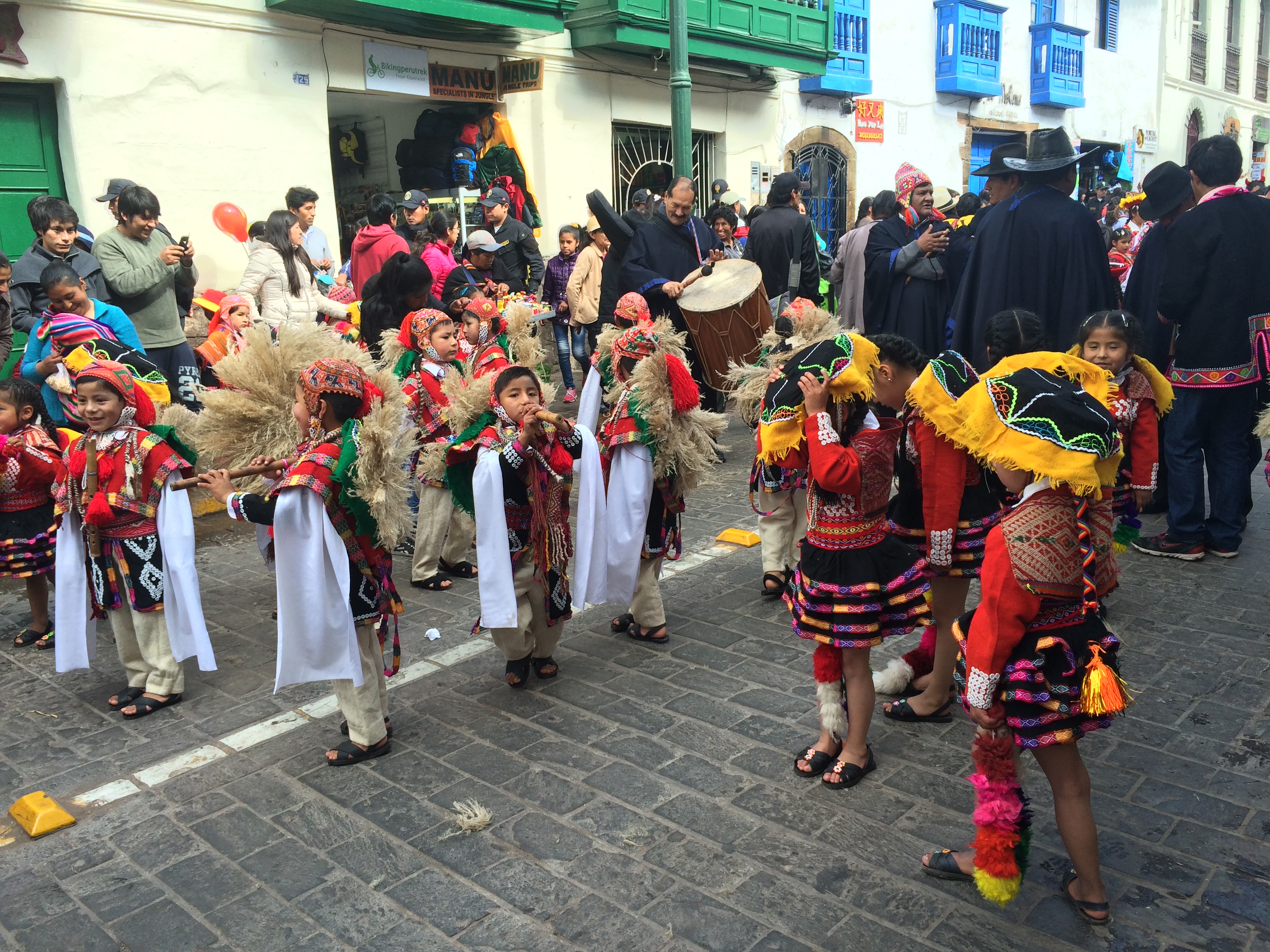
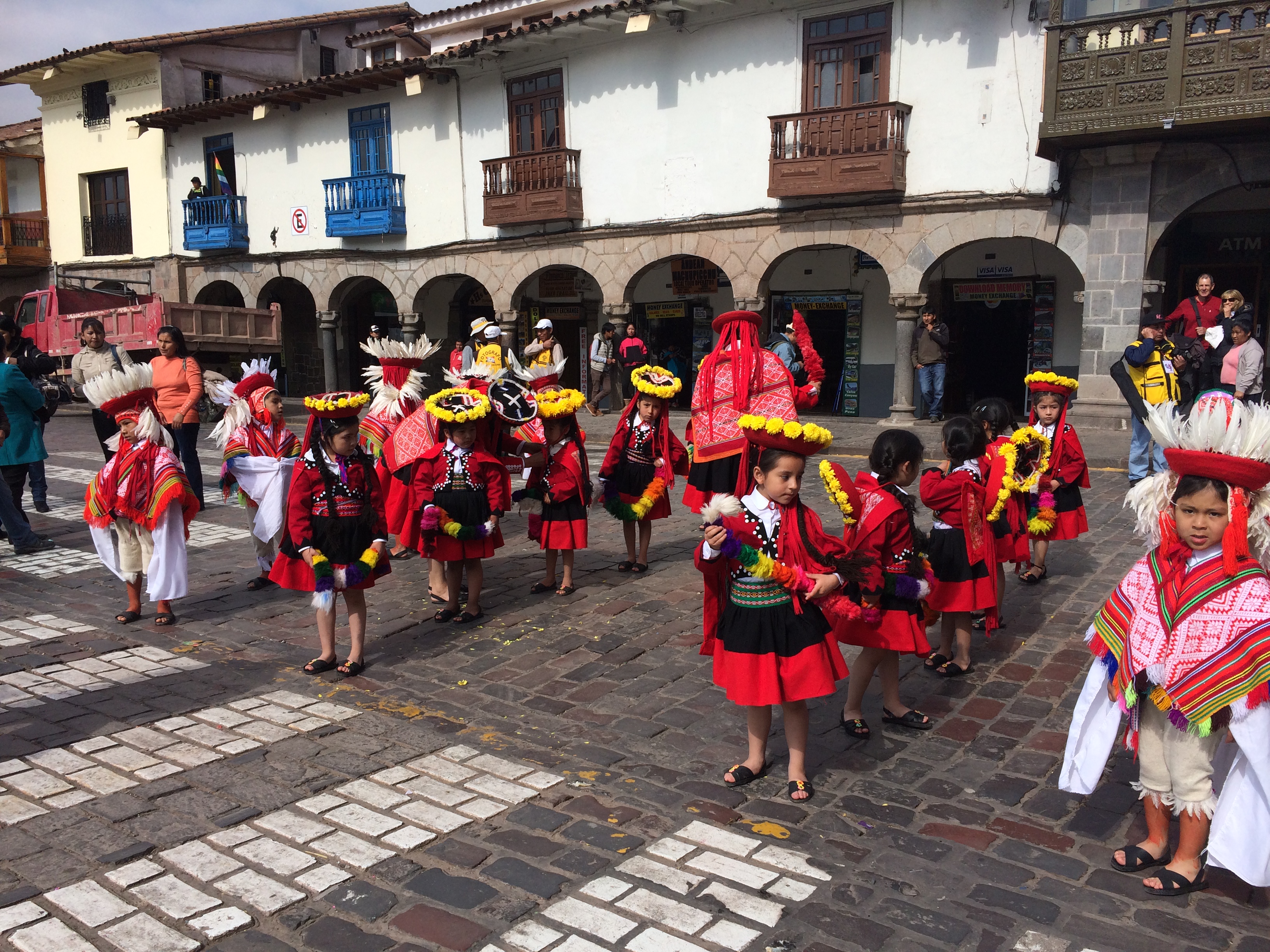
To cushion our classic 4-day/3-night Inca Trail hike to Machu Picchu, we tacked on two days before and three and a half days after in order to relax and explore more of Cusco, particularly the Sacred Valley.
I didn’t even know what the hell the Sacred Valley was until I came to Cusco. After thorough research I learned…it’s a giant, breathtaking valley sprawled with numerous towns, villages, and ancient Inca ruins. All-day tours to the Sacred Valley are offered on every corner of the historical district of Cusco, but the idea of being crammed on a bus with 30+ tourists for $30-$40 and being herded from one site to the next disgusted me. Thanks to informative sites such as Andean Travel Web and The Only Peru Guide, I was able to take public transport for a fraction of the cost and explore parts of the Sacred Valley independently and tranquilly.
Puka Pukara, Tambomachay, and Sacsayhuaman
From Calle Puputi we hopped on a colectivo headed for Pisac, but got off at the ruins of Puka Pukara for the start of our half-day self-guided tour. The plan was to walk back down along the road toward Cusco for a total of 8 km, visiting several ruins along the way. We paid 4 soles each (~$1.25), but I think it should have been 2 soles each (~50¢). Whatever. I read the typical price with a tour company to visit these nearby ruins is $10-$15 anyway. =P
Puka Pukara, a slightly underwhelming set of ruins overlooking the valley.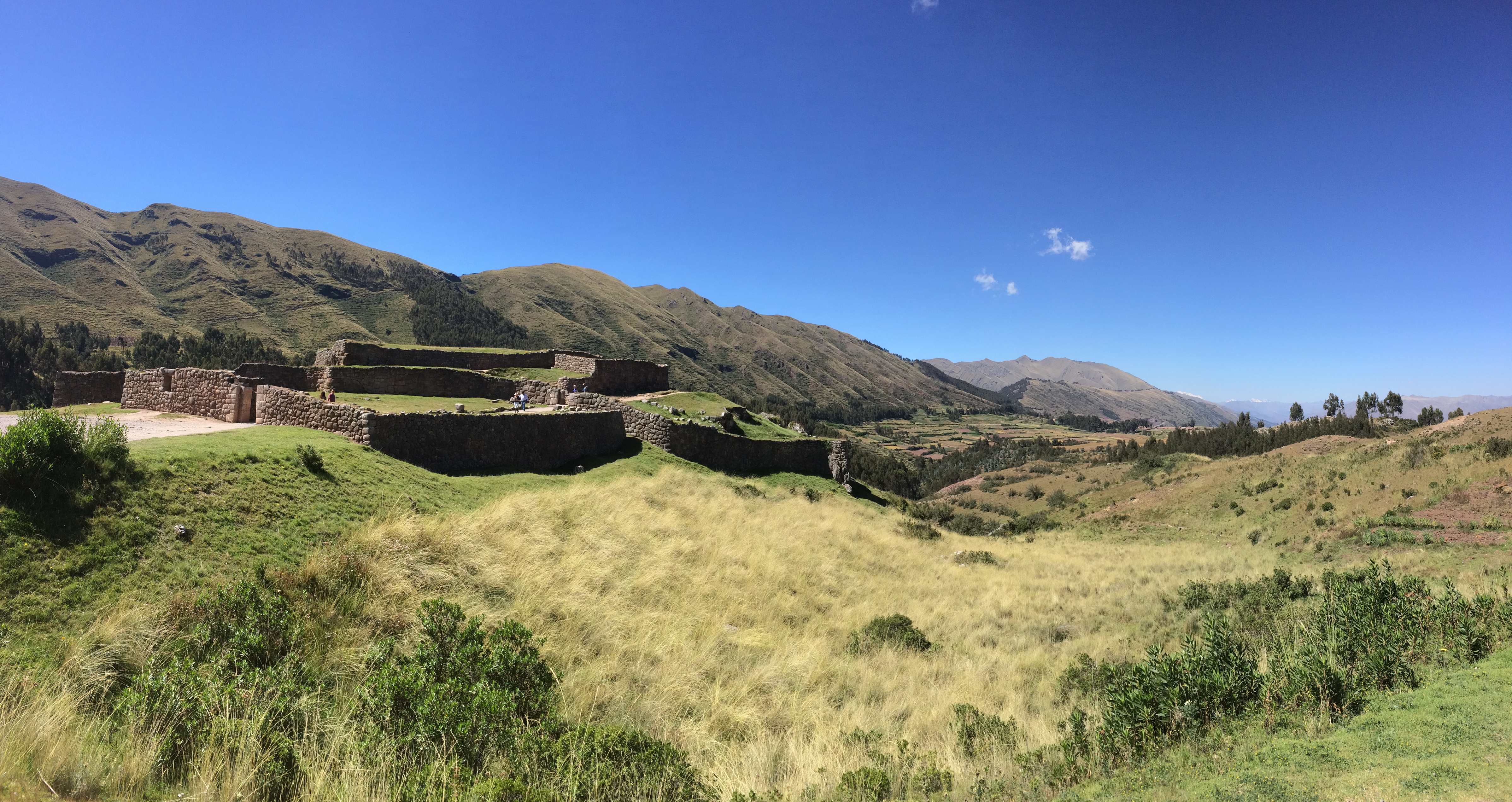
Then we crossed the street to Tambomachay, assumed to be ritual baths only for the elite due to its neatly cut and assembled stones.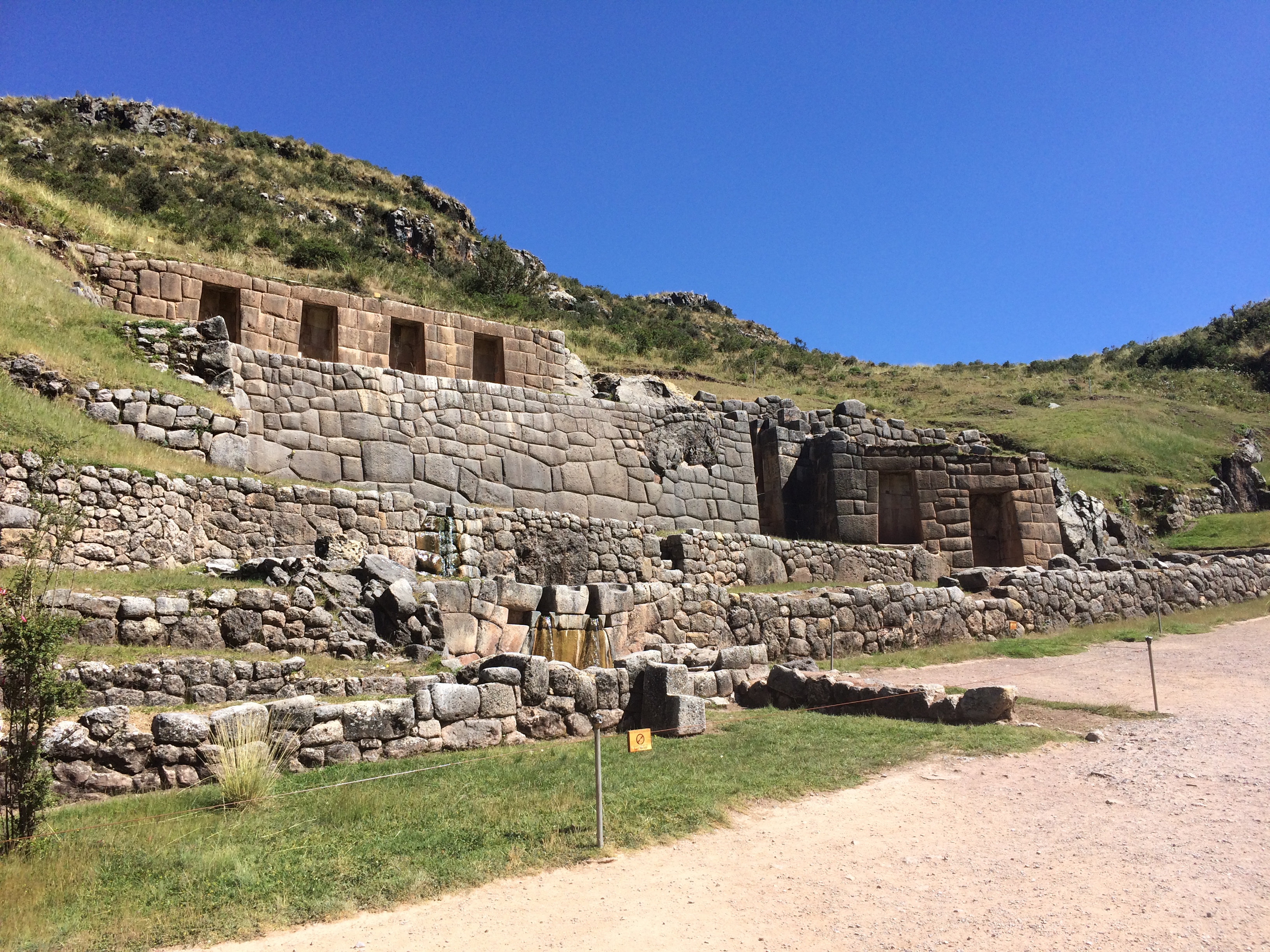
And then we walked down the road toward the marvelous set of ruins of Sacsayhuaman (sounds like “Sexy Woman!”), a spectacular fort overlooking the modern city of Cusco.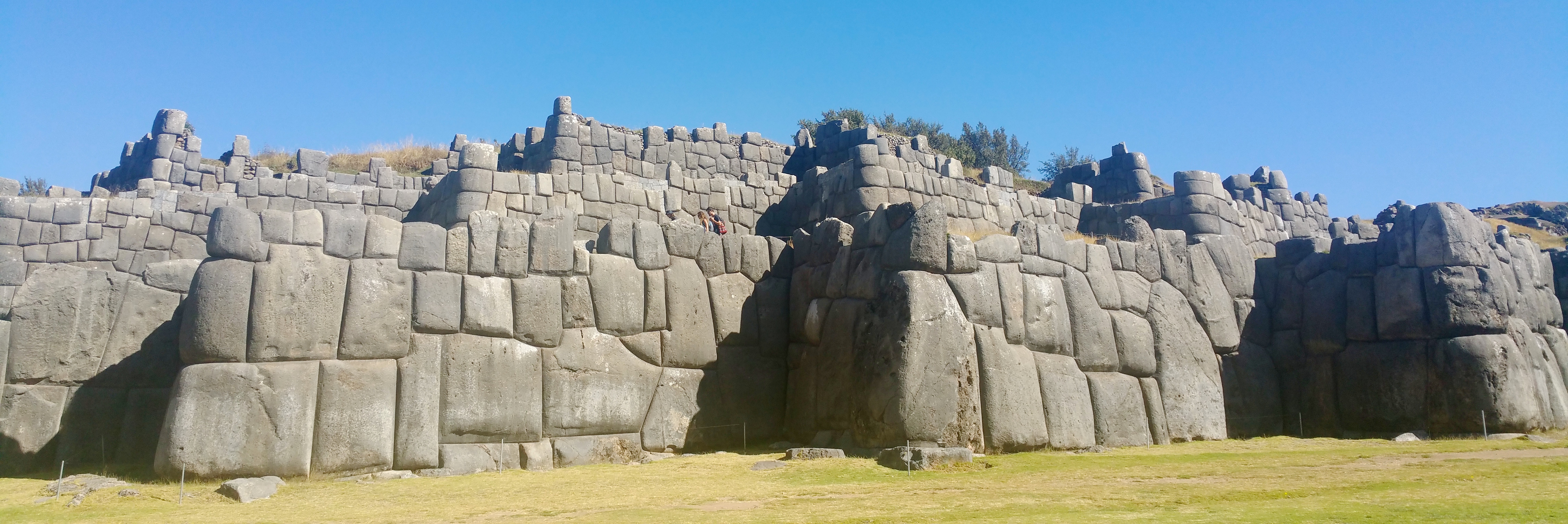
Imagine the people of an ancient civilization carving giant building blocks out of a quarry, and then transferring them piece by piece to construct a military fort. Some of the largest cut stones are estimated to be 300 tons! Quite extraordinary.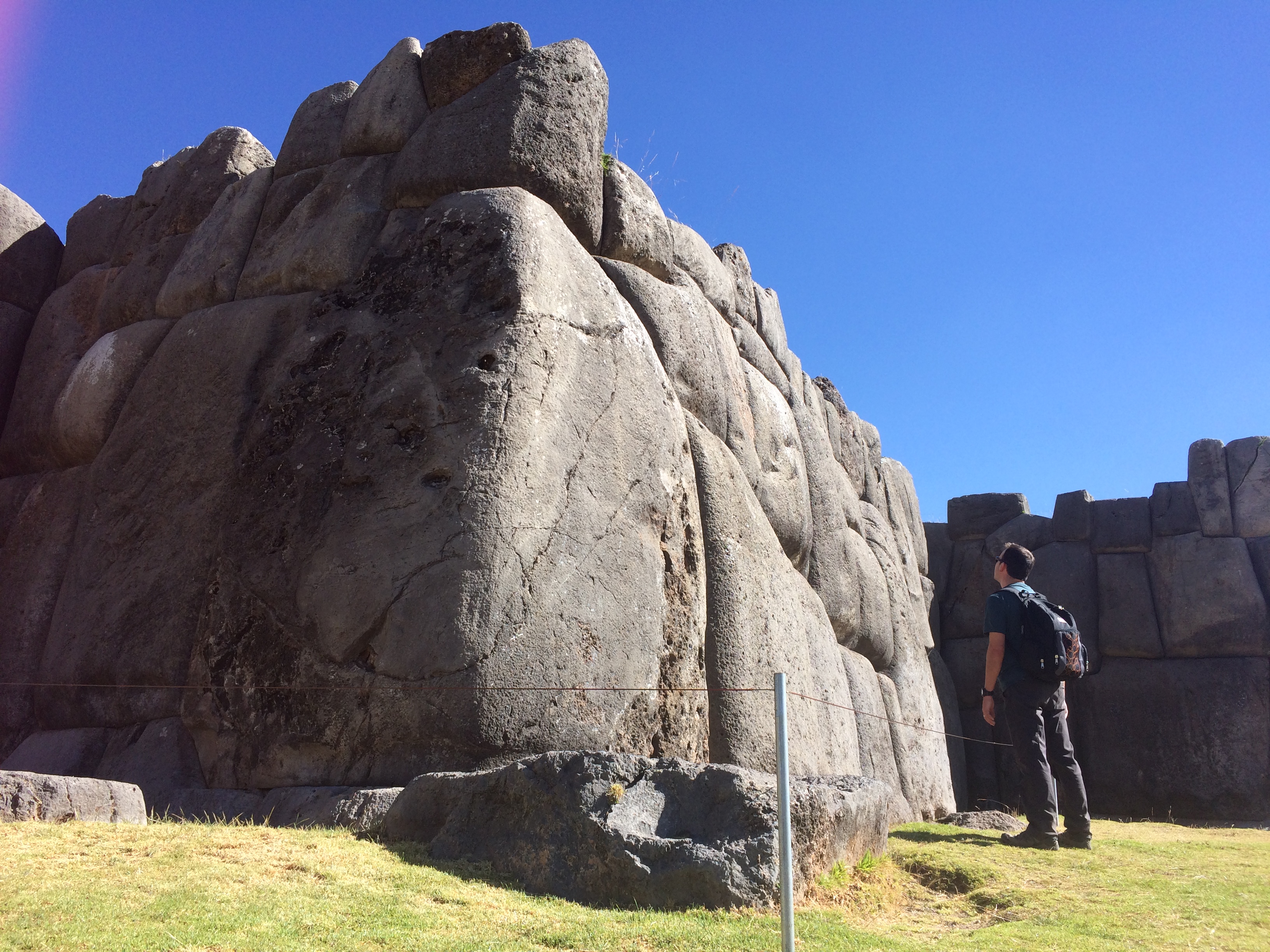
We returned to Cusco after this short tour, which was just down a set of steep stairs along the fort of Sacsayhuaman. Total cost of this mini tour? 4 soles (~$1.25) per person!
The following morning we set off for our Inca Trail trek that we booked back in January (6 months in advance!), but we continued our self-guided tour of the Sacred Valley after we returned from our trek.
Pisac
After a day of rest from the Inca Trail, I explored Pisac for half a day on my own. I returned to Calle Puputi and took the colectivo to Pisac for 5 soles (~$1.60). Pisac was only about a 40-minute windy ride from Cusco, so I was there before I knew it!
I wandered through the quaint, little town nestled in the valley before starting the steep hike up to the ruins.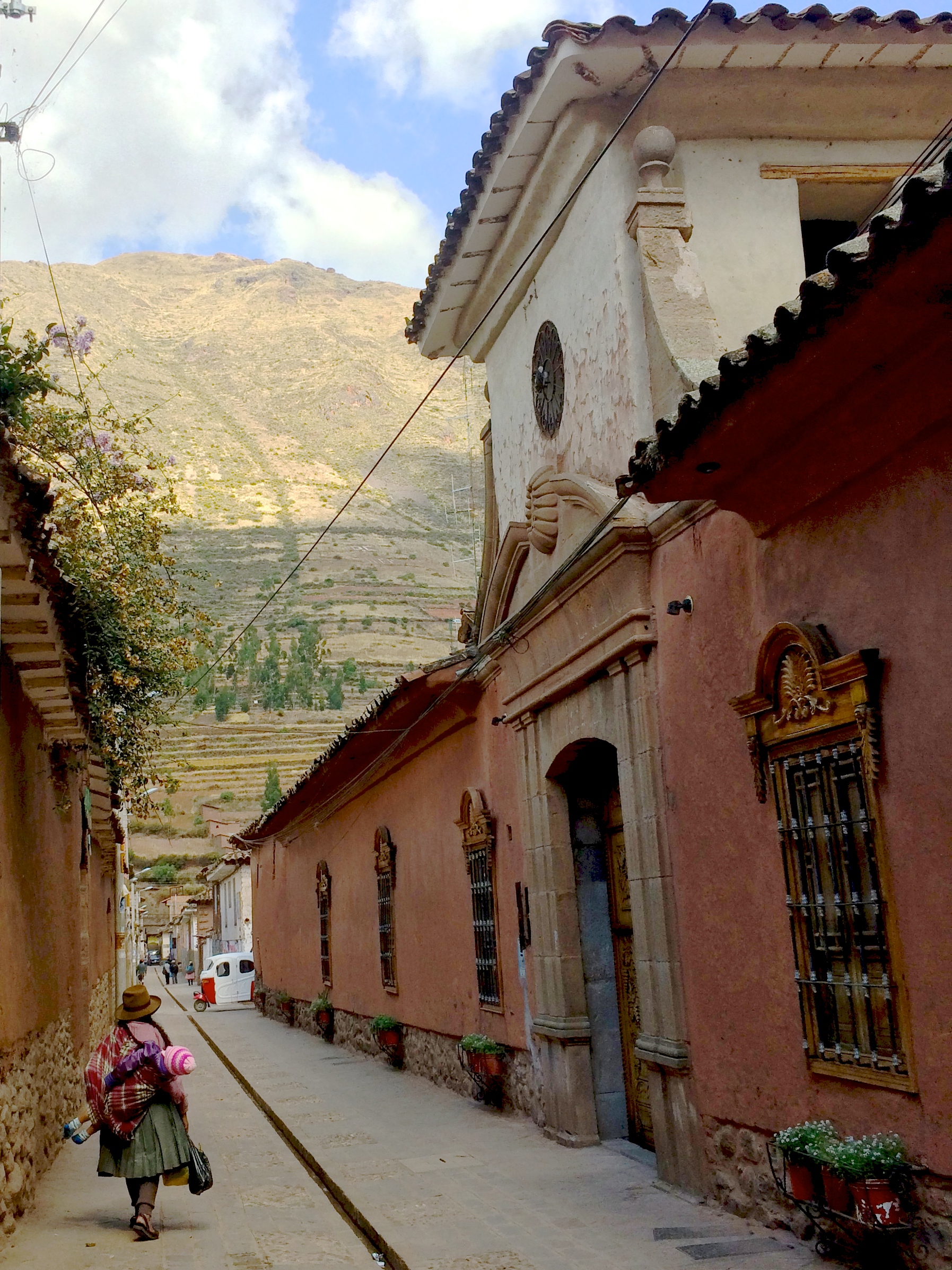
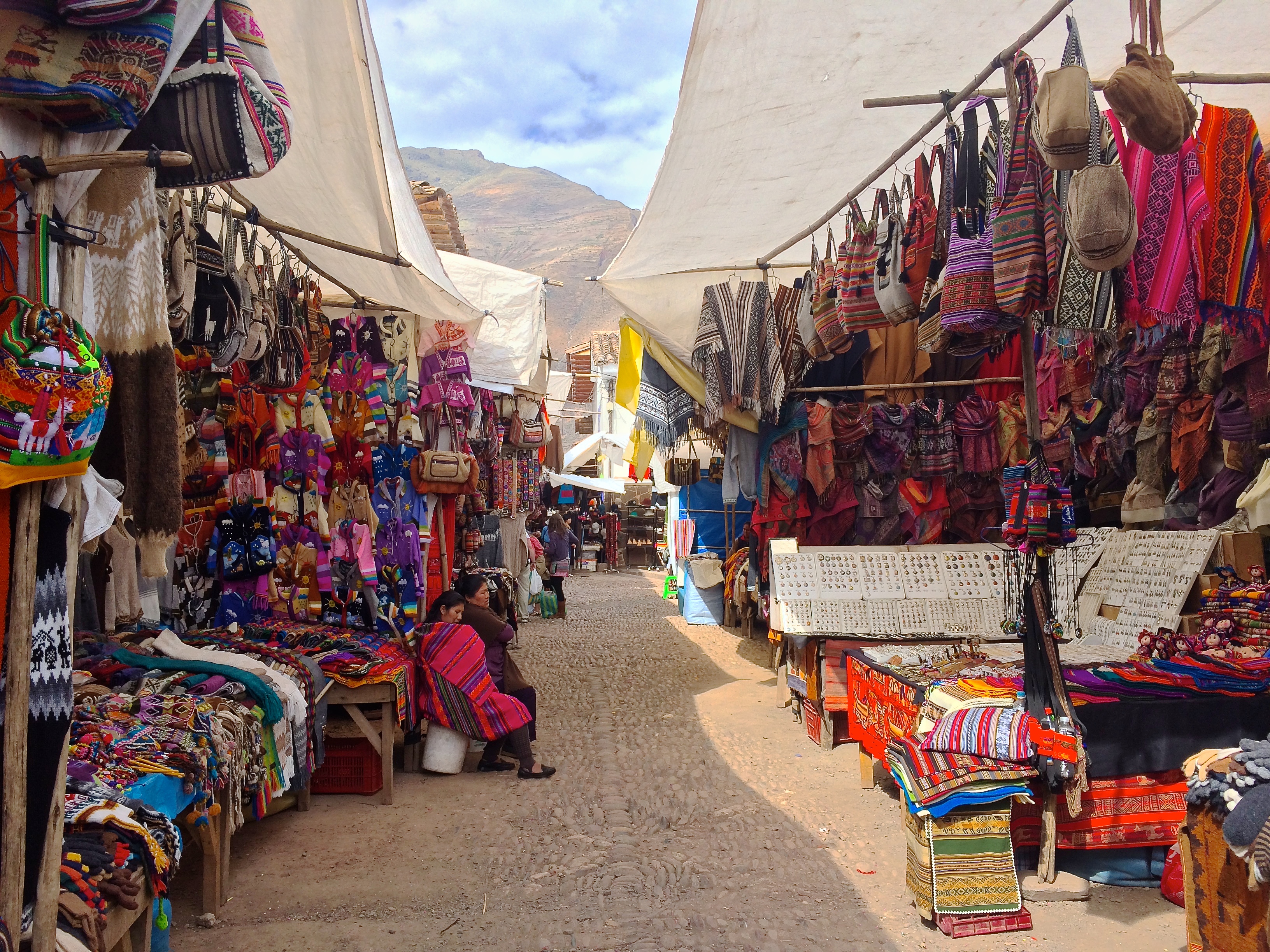
The path to the ruins was impossible to miss, and the hike up was slow and steady. Hardly anyone else attempted this grueling hike; most people on the ruins either came from Cusco on a tour van/bus, or took a taxi from Pisac.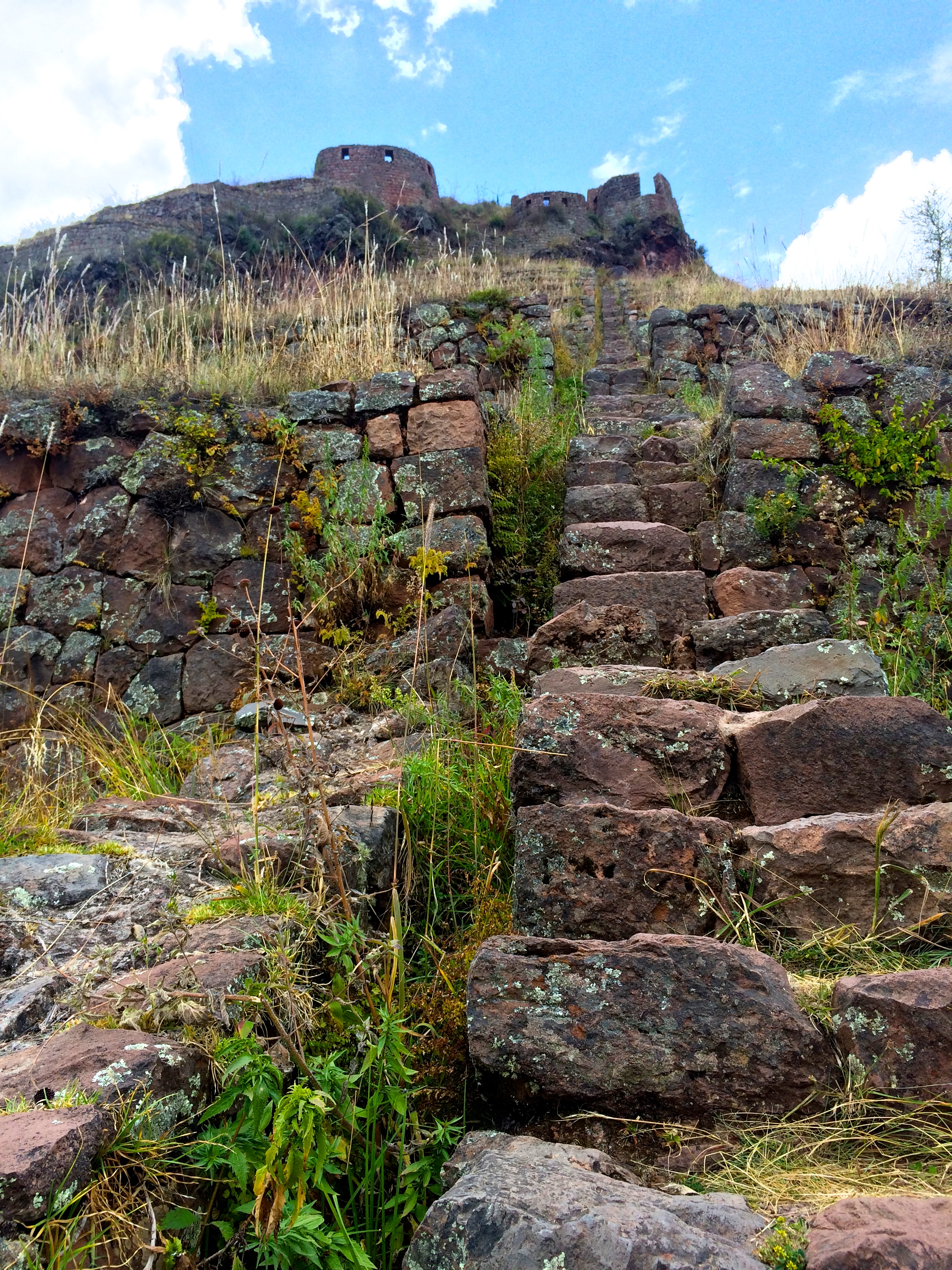
Despite the poor lighting, the views of the ruins, valleys, and terraces were phenomenal. Although it took me only 40 minutes to summit, I needed more than an hour to explore all the ruins at the top.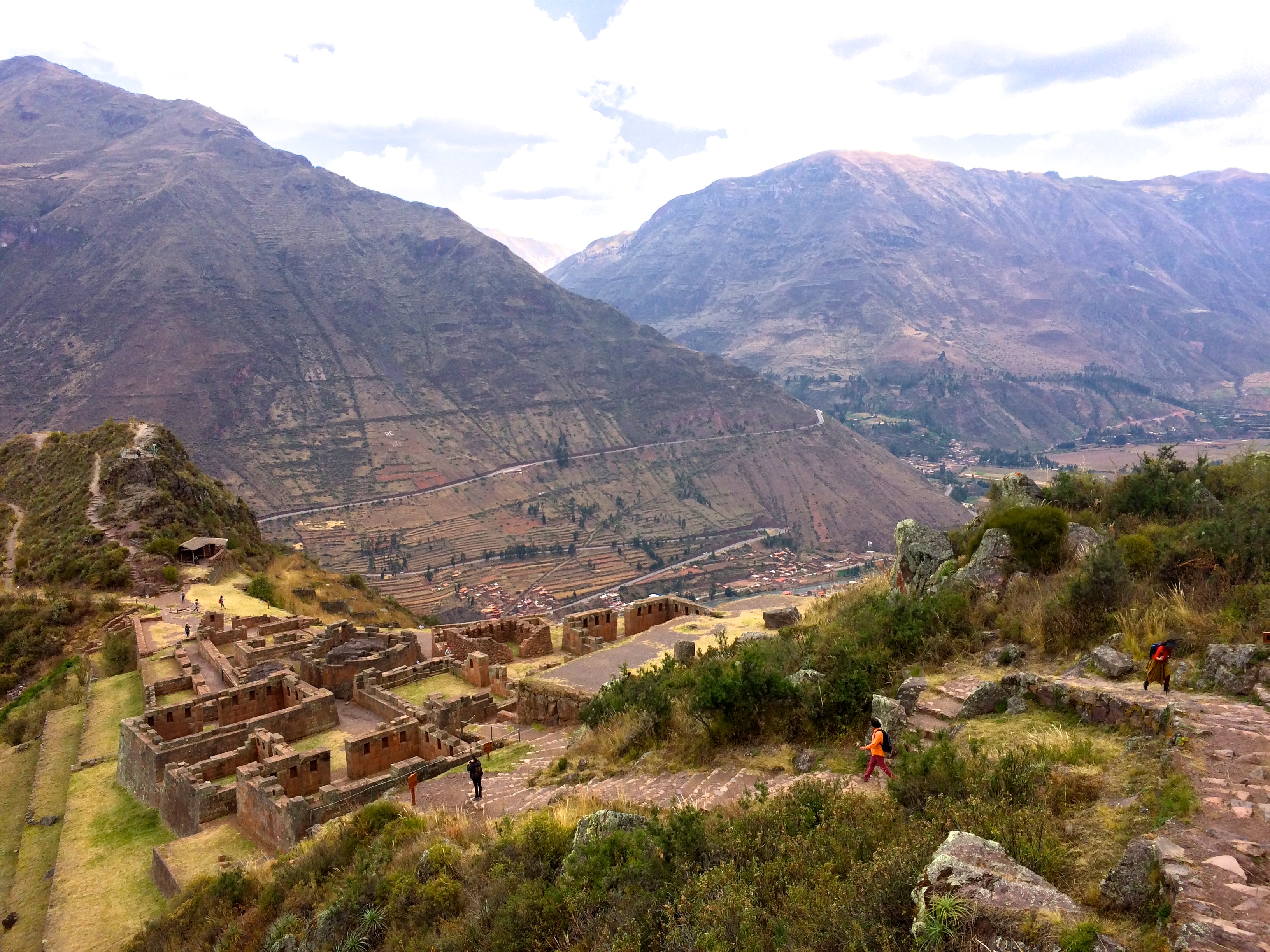
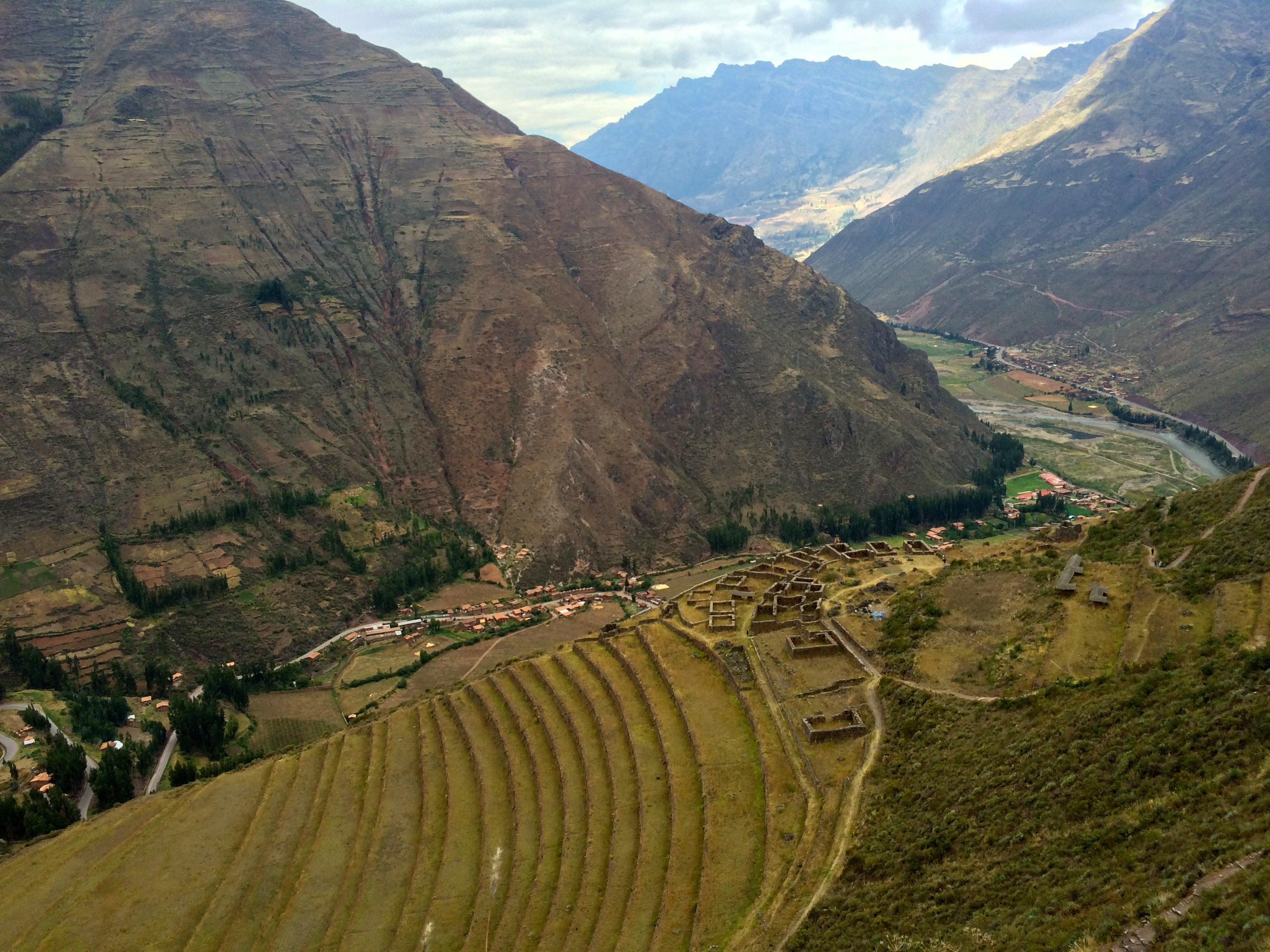
After I satisfied my curiosity and thirst to explore, I quickly descended back into town and caught another colectivo for Cusco for 5 soles (~$1.60). I was glad I didn’t try to cram another visit in the Sacred Valley that day since exploring Pisac and its ruins was not a gentle stroll through the park. It seems like most Sacred Valley tours cram Pisac, Ollantaytambo, Urubamba, and Chinchero into a single day (160+ km!) for $30-$40, which is a pity because one could easily spend a half day or more at each site!
I only spent 1 afternoon in Pisac, but the following day had quite the itinerary.
Maras, Moray, Salineras, and Ollantaytambo
The day after I explored Pisac, Chris and I for the final time returned to Calle Puputi for a colectivo bound for Urubamba. (In retrospect, we should have taken a colectivo from Calle Pavitos to Ollantaytambo and gotten off at the junction for Maras.) We paid 6 soles each (~$1.90) for a colectivo to Urubamba, then another 2 soles each (~60¢) for a public bus to the Maras junction, and then a final 1 sole each (~30¢) for a shared taxi to the tiny village of Maras. It took about 2 hours and cost us 9 soles in total (~$2.85) to get to our intended destination of Maras.
Because I wanted spare time at the end of the day to see Ollantaytambo, we opted to take the taxi from Maras to the ruins of Moray for an additional 15 soles (~$4.75). Had we not planned on seeing Ollantaytambo, we would have hiked the 5 km out to the ruins.
Despite its remote location compared with the other ruins on the Sacred Valley circuit, Moray was still quite crowded with tours. I was also disappointed to see that people were no longer permitted to enter the ruins. We were only able to spectate from a distance.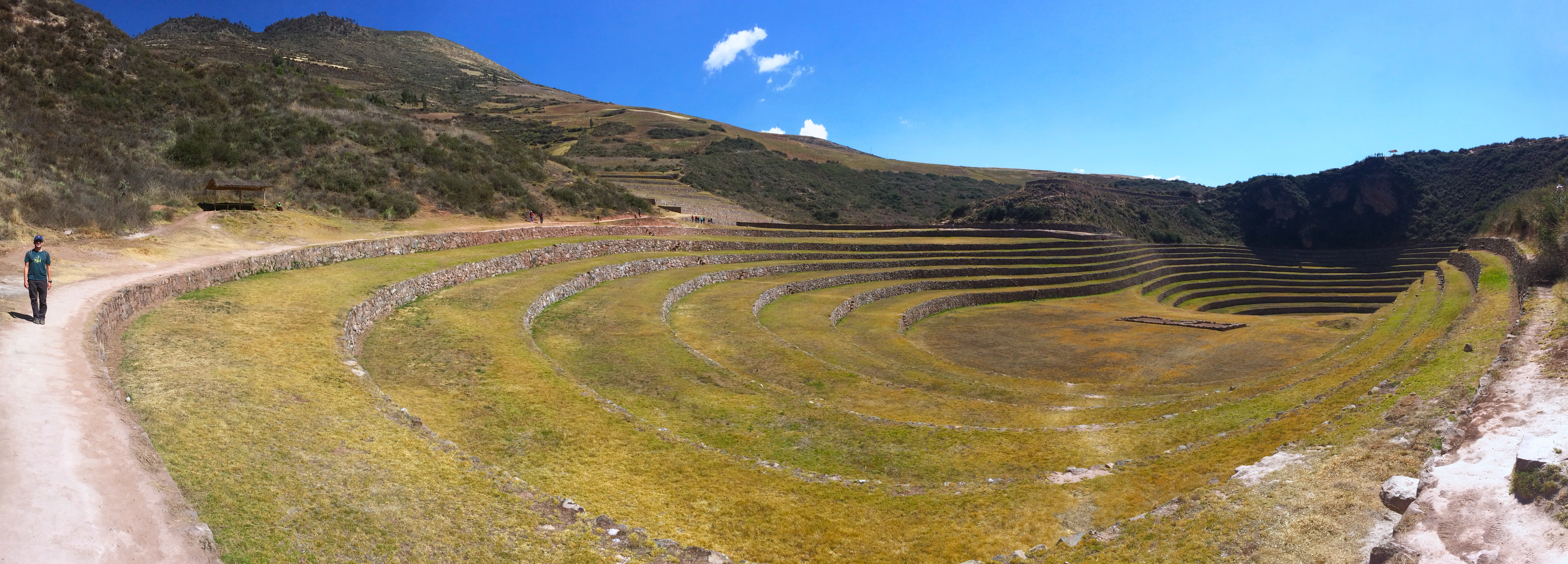
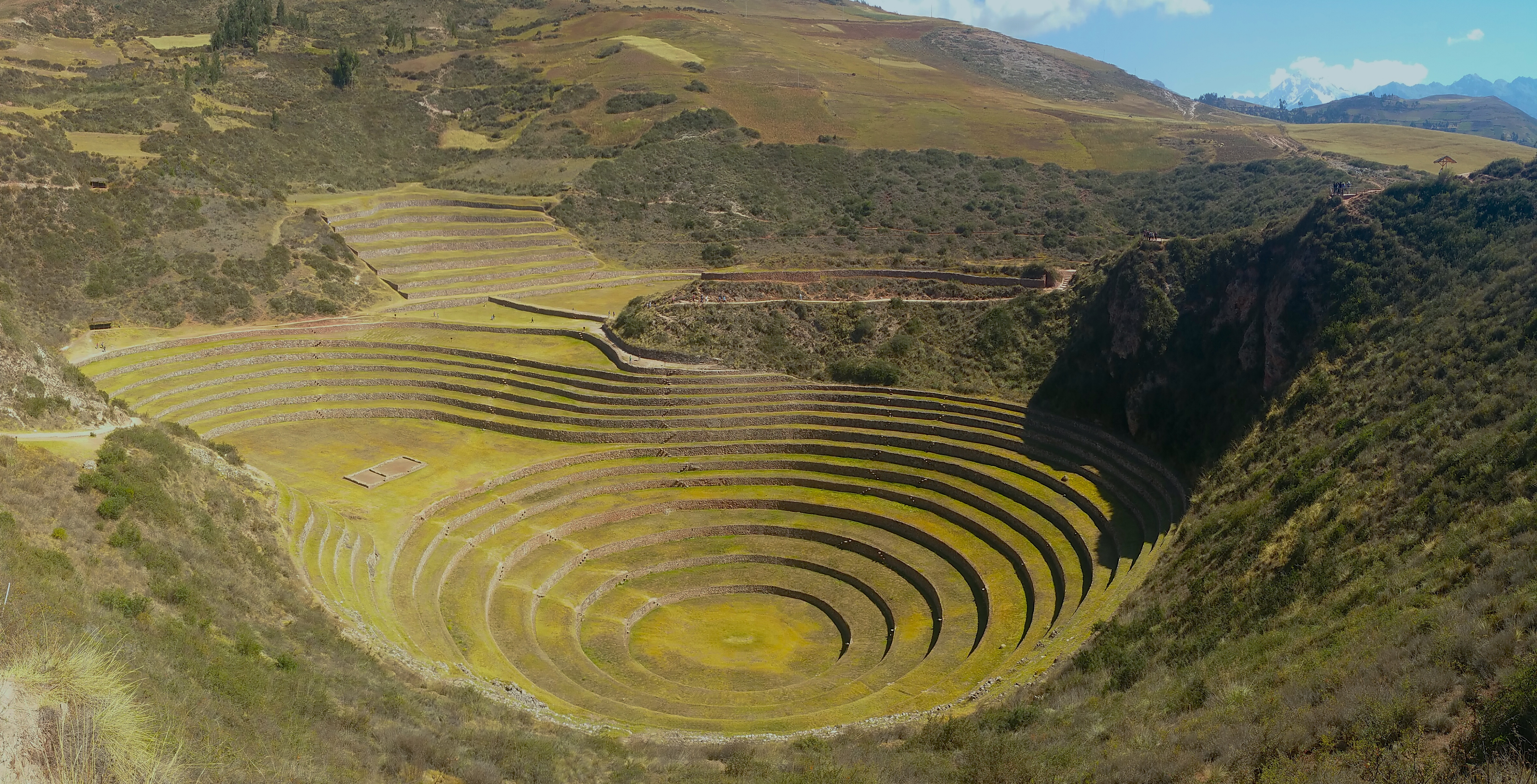
The theory behind these mega-terraces was that each level had its own micro-climate due to its positioning against the wind and sun, allowing the Incas to experiment agriculturally. How brilliant is that?
From Moray we hiked the 5 km or so back east toward the town of Maras and enjoyed the perfect weather.
Walking through the village of Maras: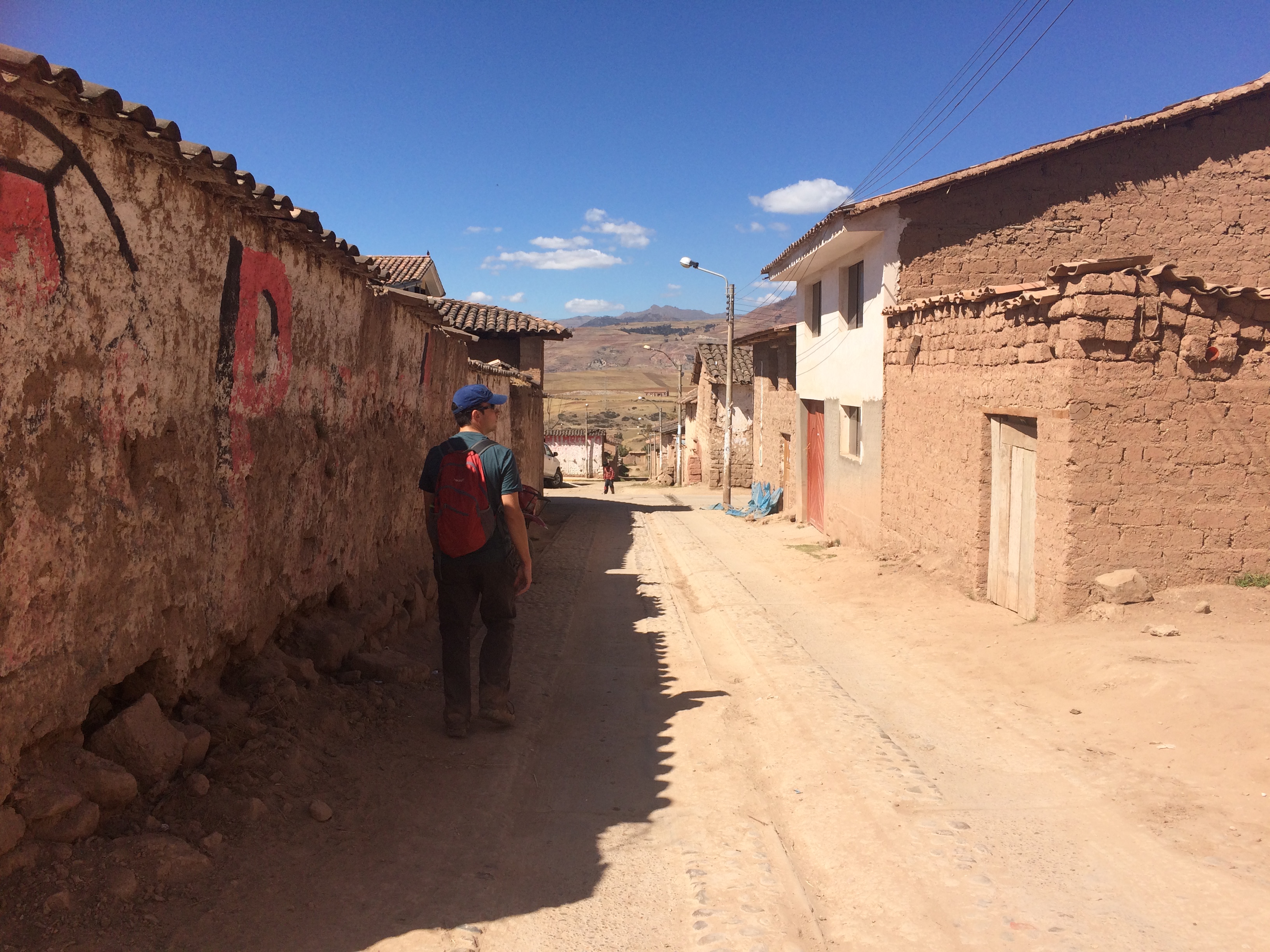
The town square, with the perfect representation of its people:
We took a quick snack break before heading along another 5 km path north toward Salineras, the pre-Incan salt mines of Maras. It was all downhill into the valley from there. The scenery was gorgeous, and not another hiker was in site.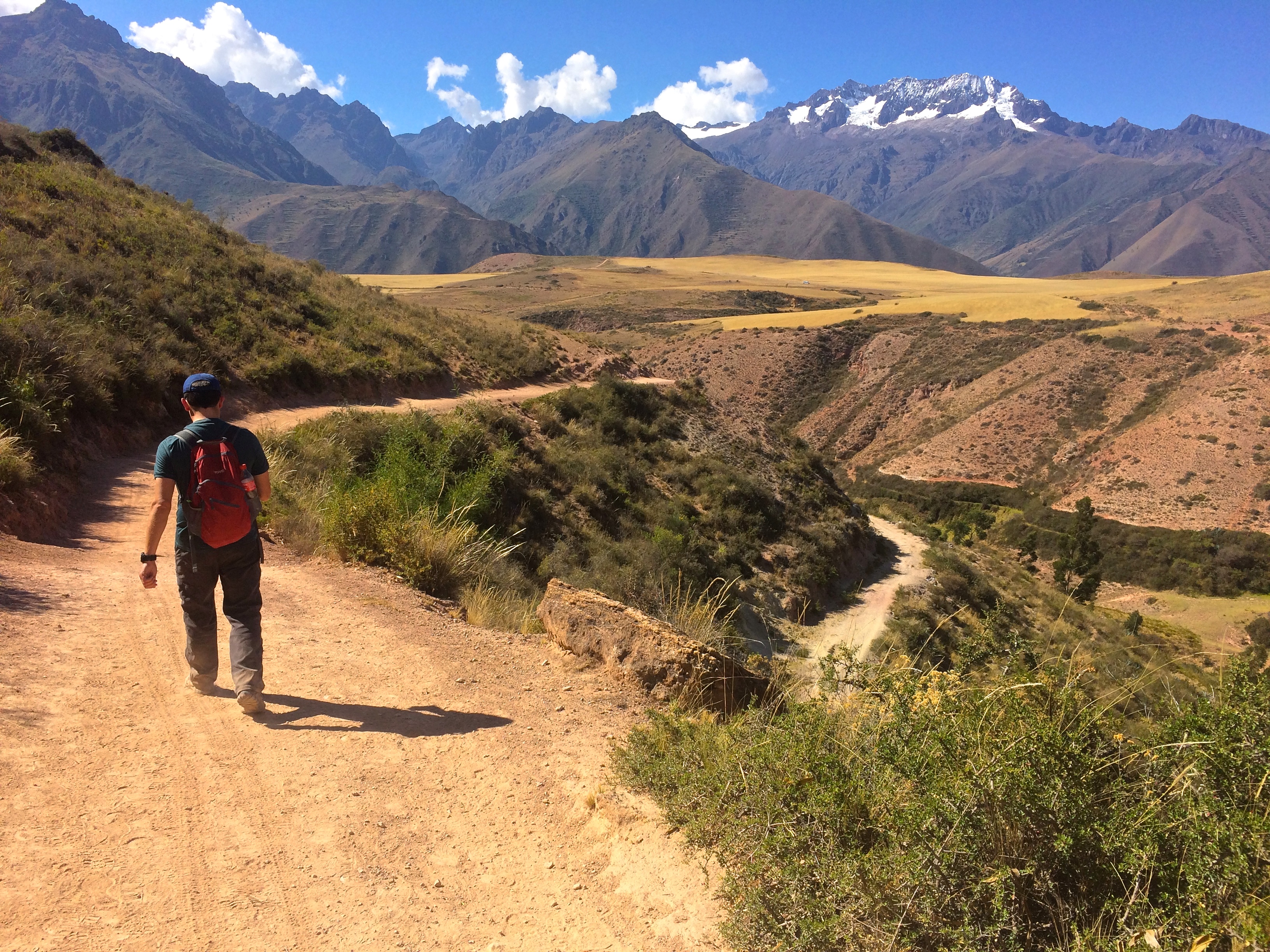
Right outside Salineras, a woman with her burro smiled for my camera: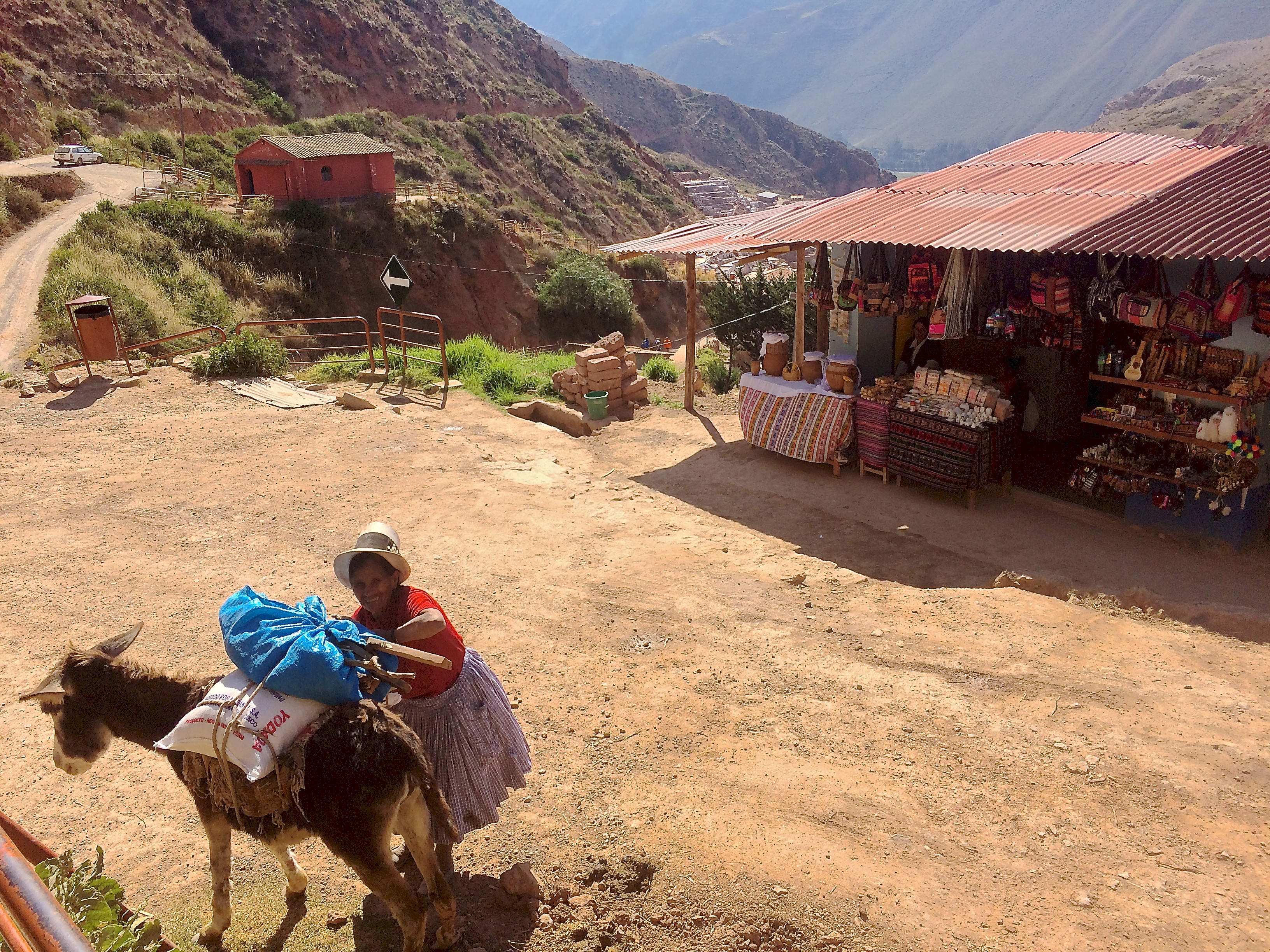
And the jaw-dropping, incredible salt mines! Totally off the beaten path, and 10 soles (~$3.15) to enter.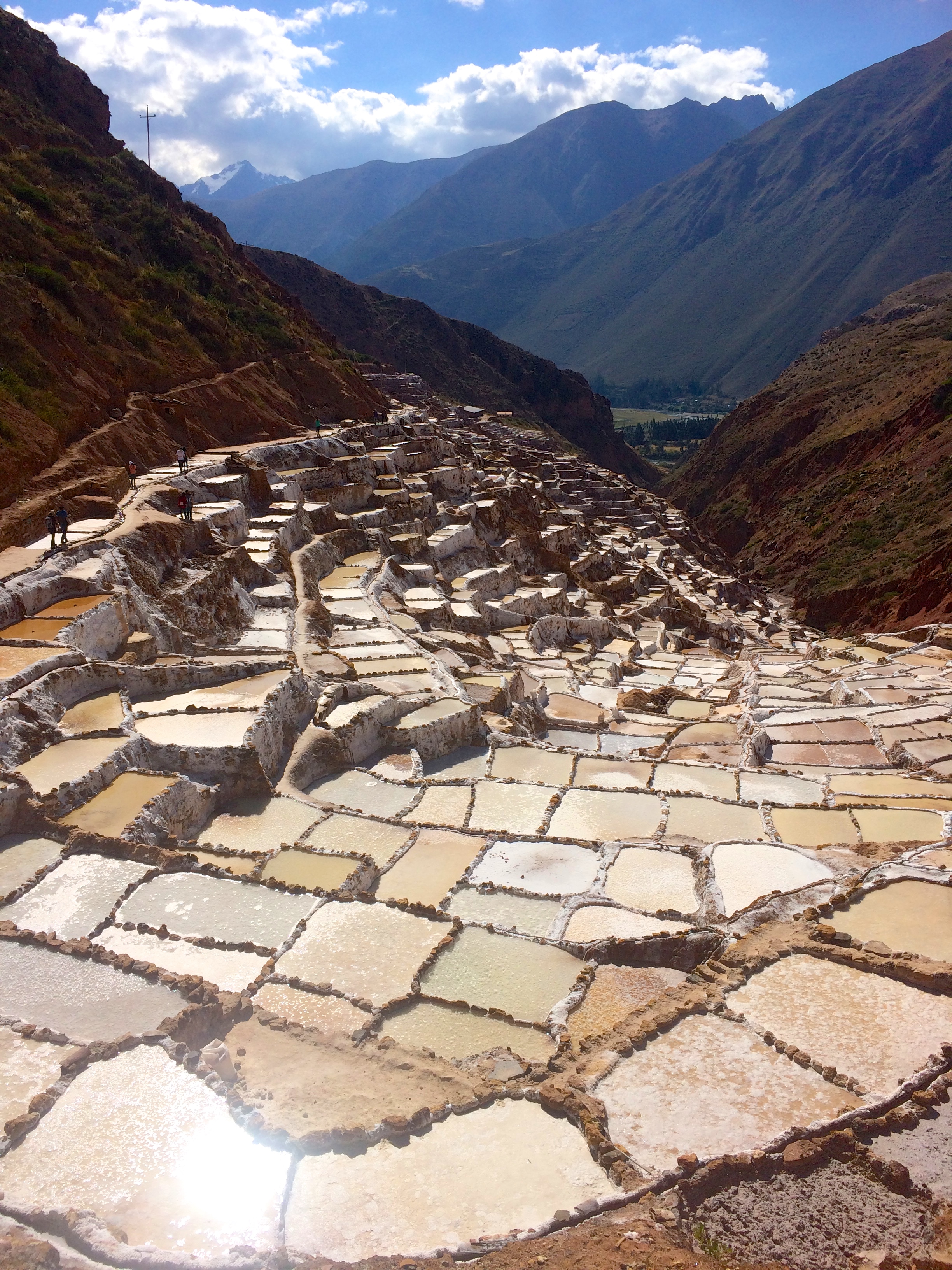
A natural warm salt spring trickles through this valley, allowing for these salt mines to exist. The traditional, pre-Incan salt-mining method is still used today. Miners can be seen working at these natural salt mines Monday through Saturday.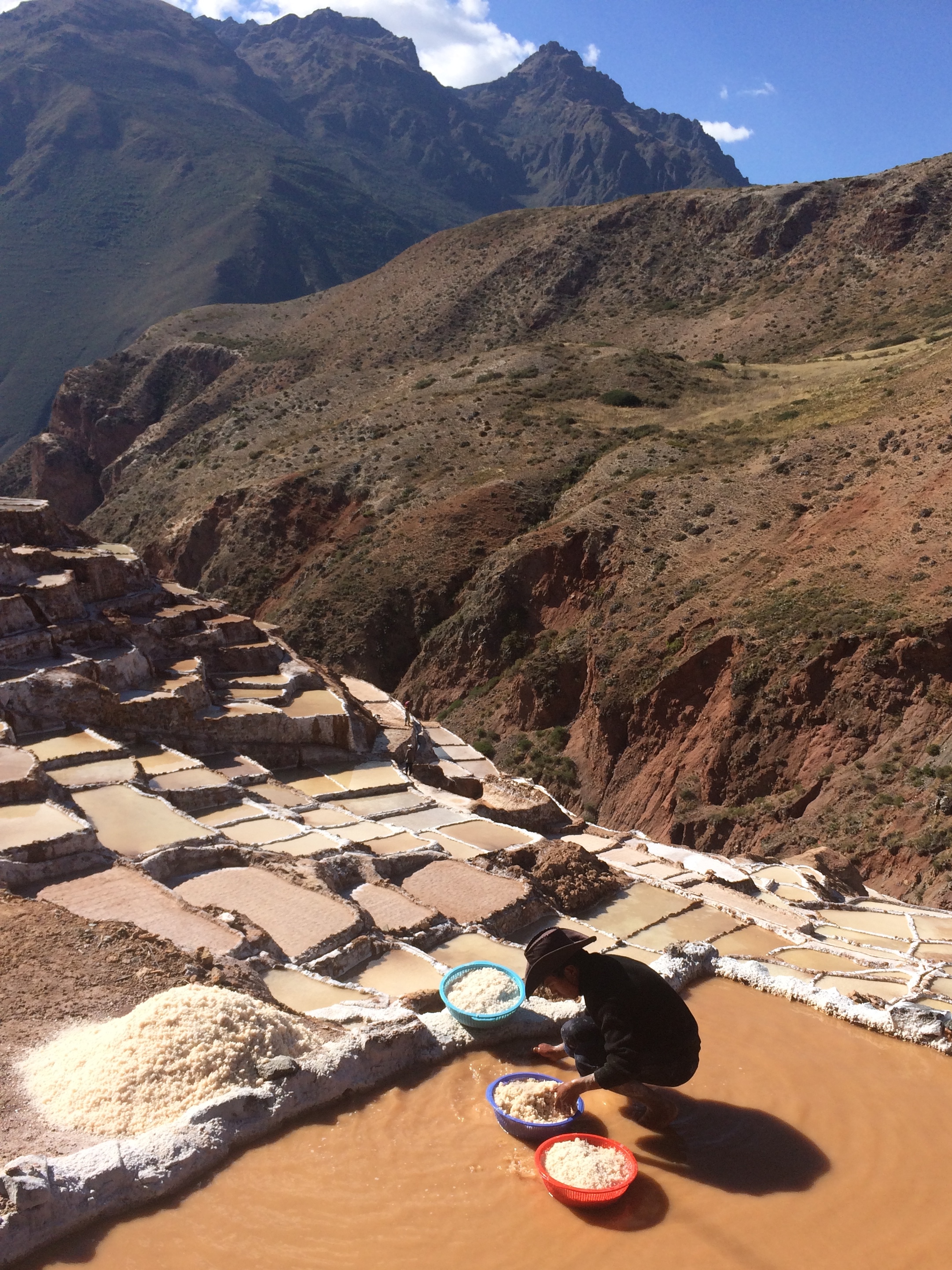
We hiked up and down along the mines.
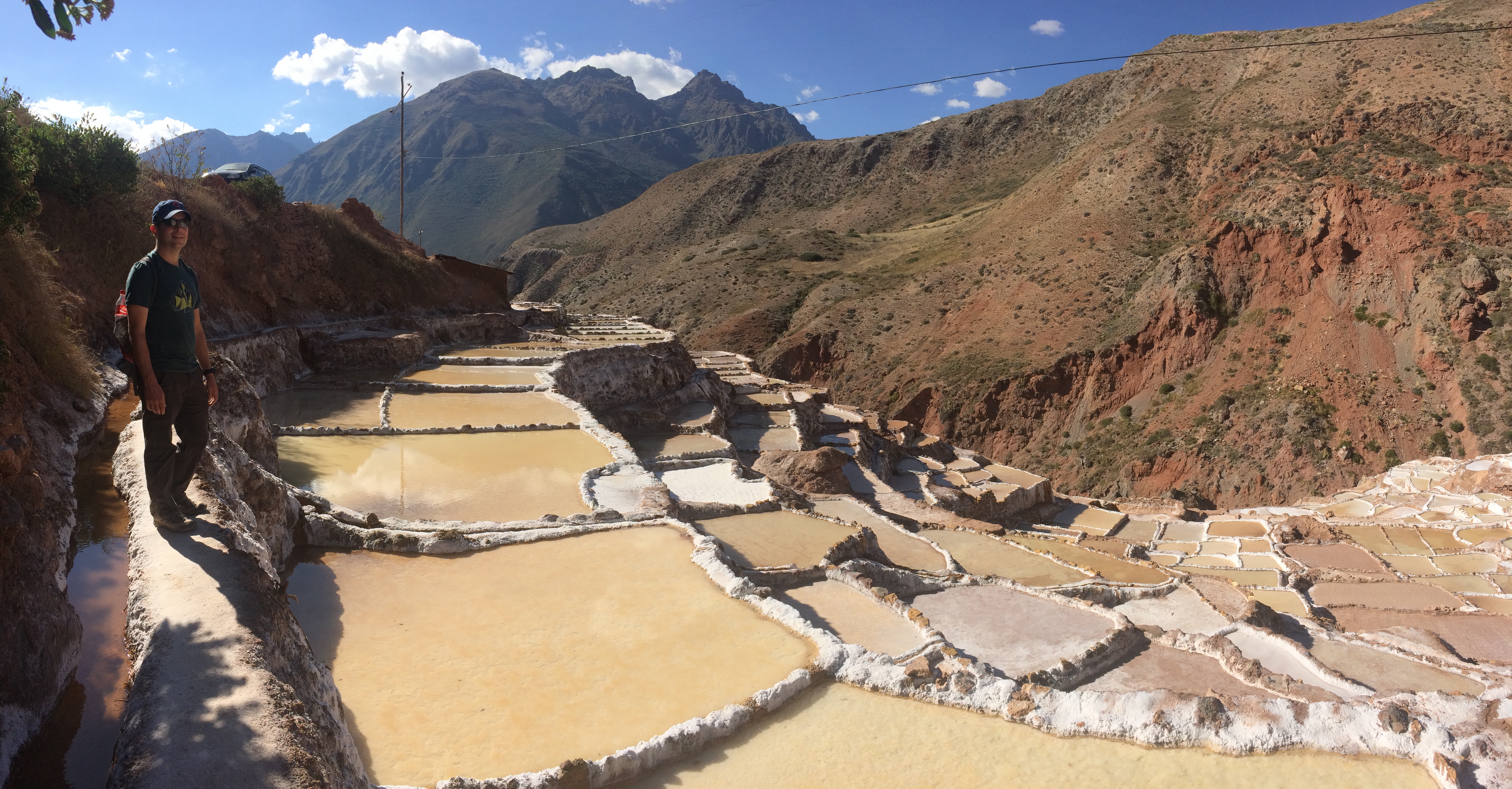
The trail simply took us north, out of the salt mines, and down toward the river.
We continued the hike, crossed the river, and walked west into the village of Yanahuara. Fortunately an elderly woman was already standing along the side of the road, waiting for a colectivo for Ollantaytambo. She told us the standard fare was 1.30 soles each (~40¢), so 2.60 soles for the both of us. A colectivo appeared within minutes, we hopped on, and we soon arrived to Ollantaytambo in about 20 minutes. I paid the driver 3 soles (~90¢) for both of us.
By this point the sun was beginning to set, and the shadows were long and dark. Earlier I was worried that we weren’t going to make it to Ollantaytambo for whatever reason (getting lost on the hike, public transportation not working out, the possibility of hitchhiking, etc.), but we made it! The beauty and grandeur of Ollantaytambo quickly wiped my fatigue away, and climbing up, over, and around the ruins was not a problem.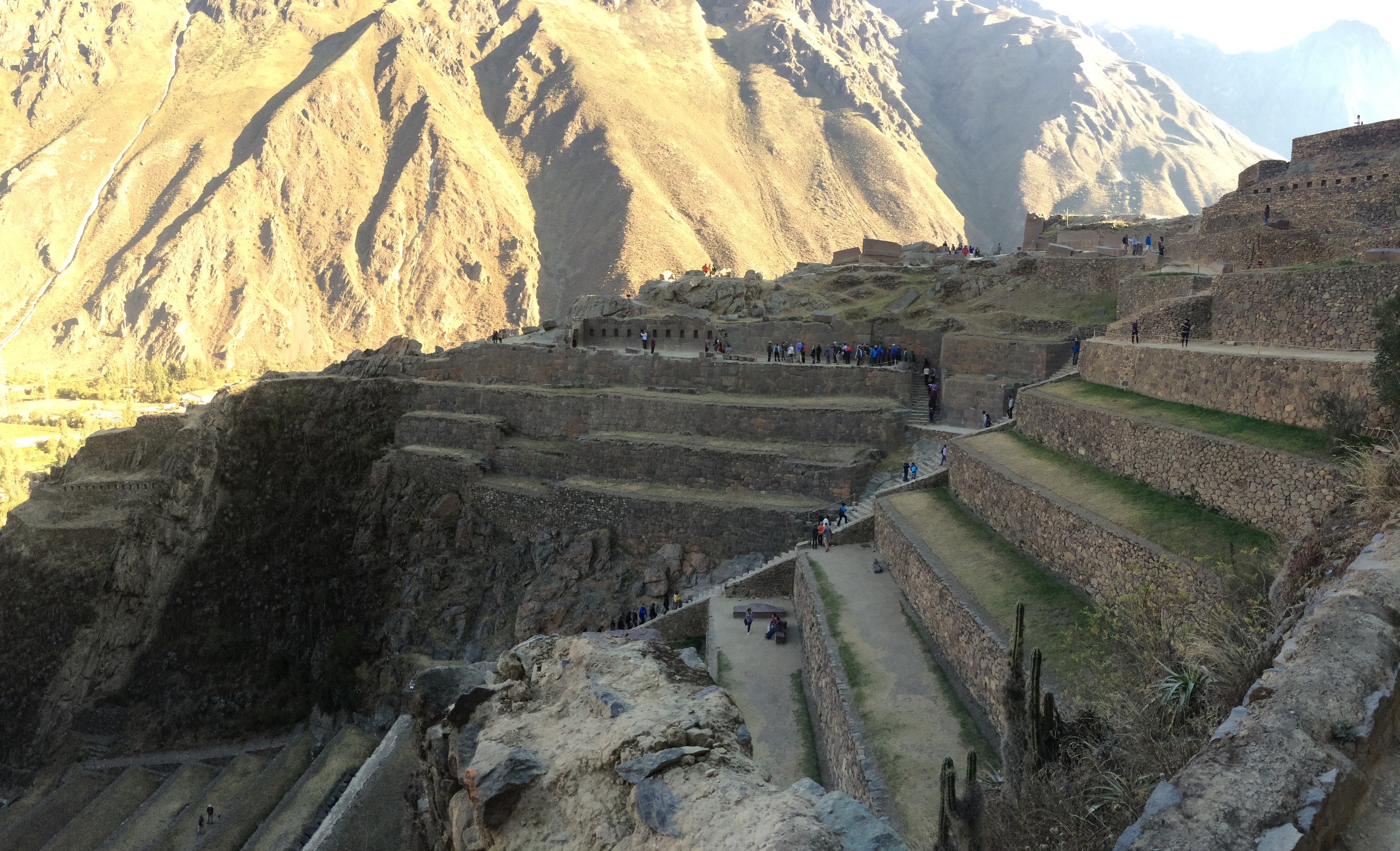
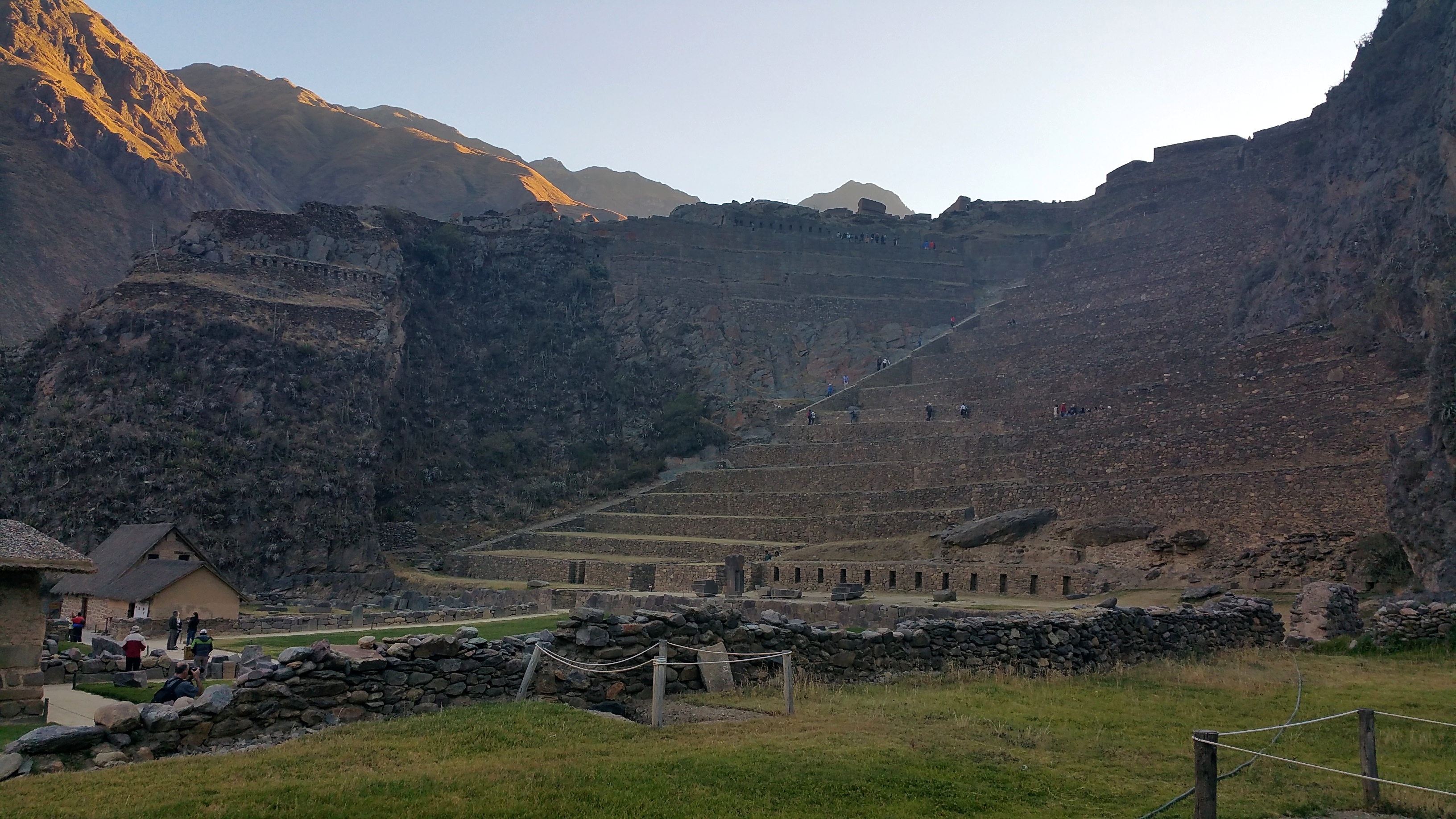
After venturing through the ruins for about an hour, we finally sat down to rest at a cafe and people-watch in the touristy town of Ollantaytambo. 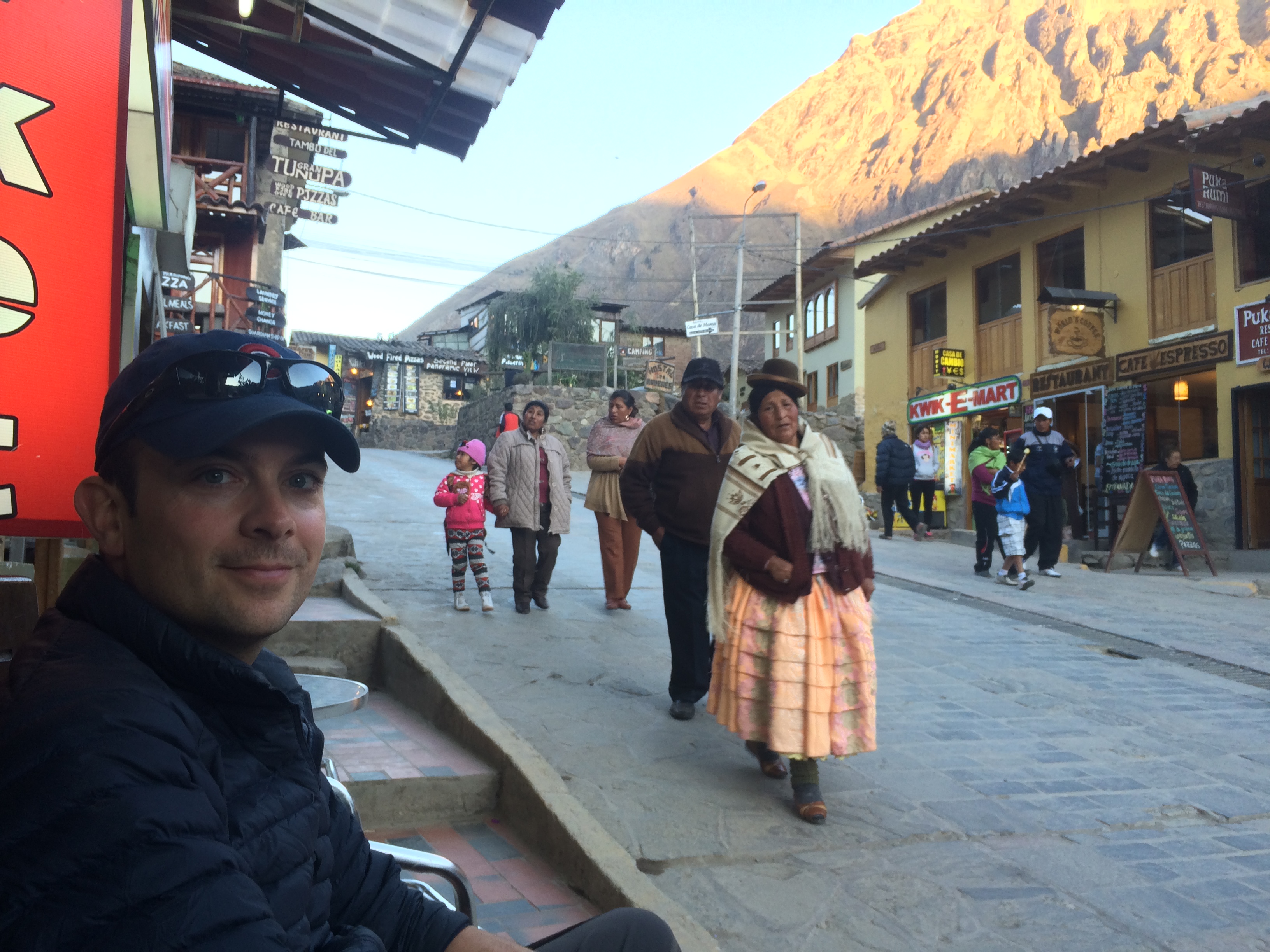
All the hiking and logistical planning was finally done, and the only thing we had left to do was to find a colectivo to take us back to Cusco, which would be the easiest task of all that day. We eventually found a colectivo for 10 soles each (~$3.15), but we could have easily taken another colectivo for 8 soles (~$2.50). The 1.5-hour ride back was uneventful and we returned to Cusco exhausted and eager for dinner. The total cost of transportation per person that day? 28 soles, or $8.88. Not bad for checking out Maras, Moray, Salineras, Ollantaytambo, and a couple of hikes between!
So there you have it. We thoroughly enjoyed our time in the bustling city of Cusco and parts of the Sacred Valley. Our primary reason, and I’m assuming the same for almost all tourists, for being in Cusco was to see Machu Picchu and hike the Inca Trail. But to my pleasant surprise, there was simply so much more to do in and around Cusco. I’m glad I was able to see the Sacred Valley at my own leisurely pace, but I know I only saw a fraction of it. My recommendation to everyone else is to not rush through Cusco or Machu Picchu. There is so much more that is as equally fascinating.

So glad I found your blog post on this exact itinerary I plan to do.
How safe do you think it is for a solo female hiker to do on her own?
Totally safe. I’m female and hiked alone, and I met another solo female hiker on the trail. No need to worry at all in these little villages! Have fun!
Awesome! Btw, I browsed through your other entries on Peru (because I’m going there in one month time) and they’re all very helpful information; I just wish I have another month to cover the non-gringo trail part in the north. Curious about one more thing, especially after reading your post on the touristy Lake Titicaca isles: how much Spanish do you speak and does that help from not being outright scammed for being a foreigner? I’ve been practicing through Duolingo for a few months now and almost finish the course, but no actual conversation yet.
I taught myself Spanish from a textbook for 5 weeks before going to South America. I would say at the time I knew very basic Spanish. I think it does help, but you need to remember you’re going to be paying a premium no matter what, it just depends how much. If you have time Lake Titicaca from the Bolivian side is a better visit; it’s prettier and less scammy. Si tienes algo mas preguntas, por favor pregunta me! 🙂